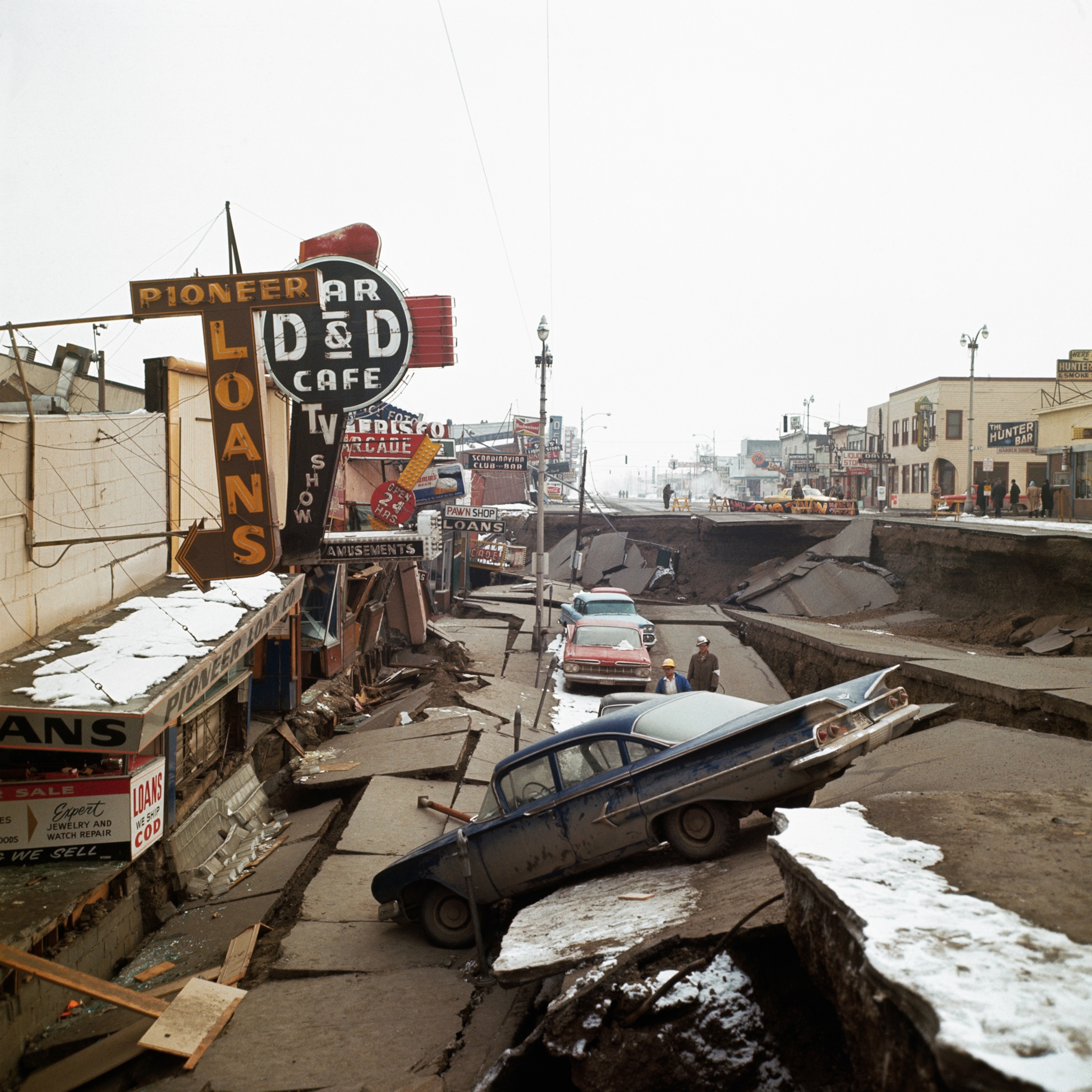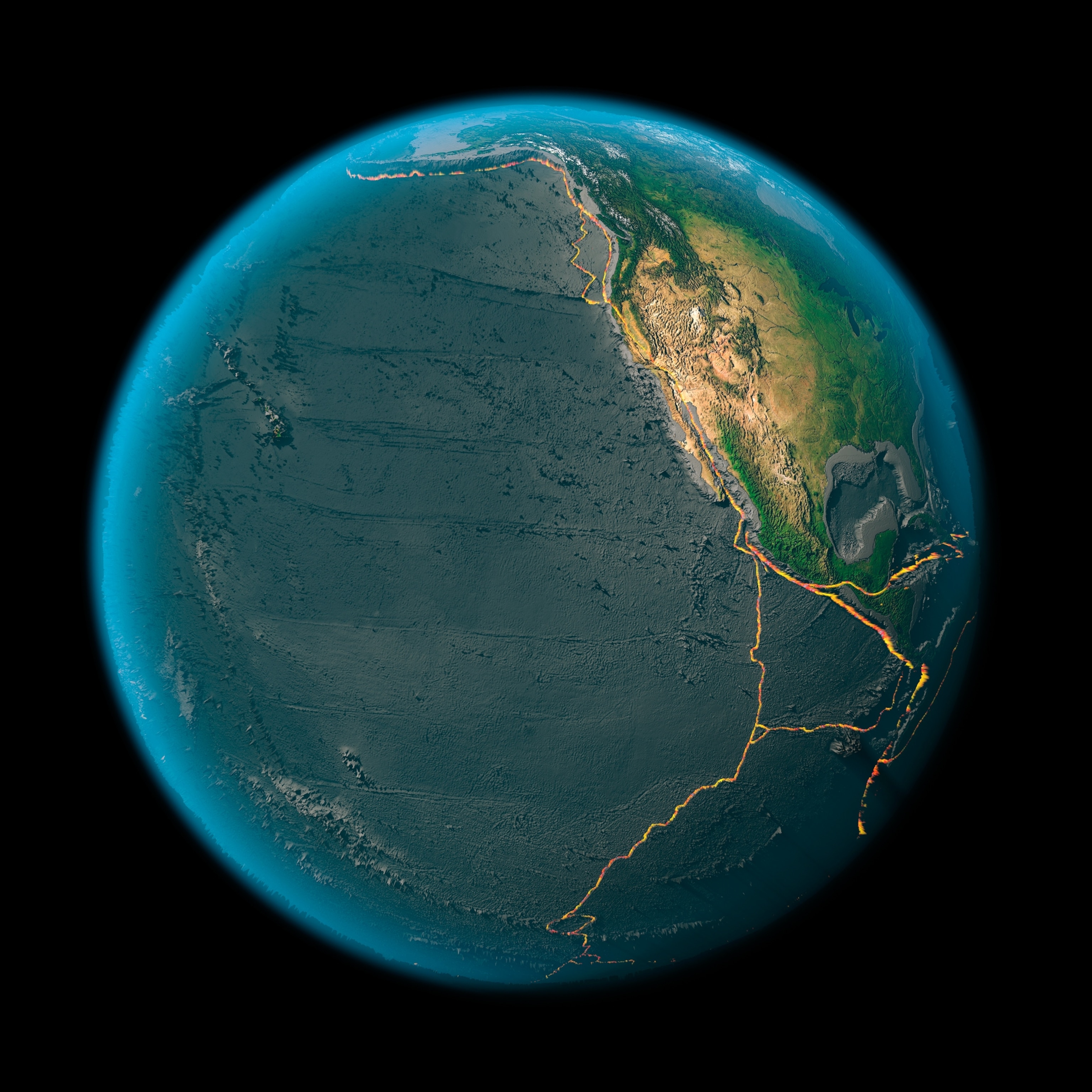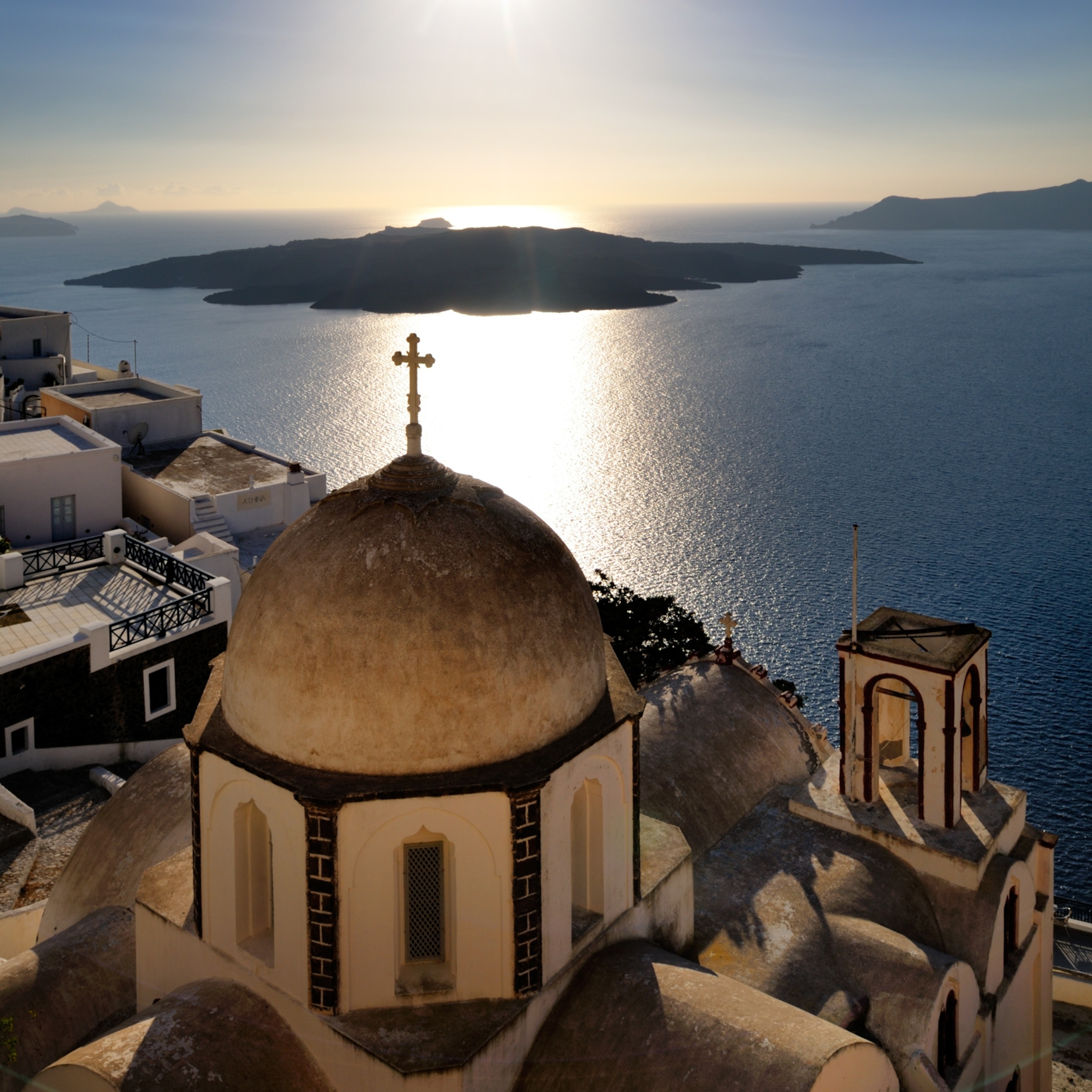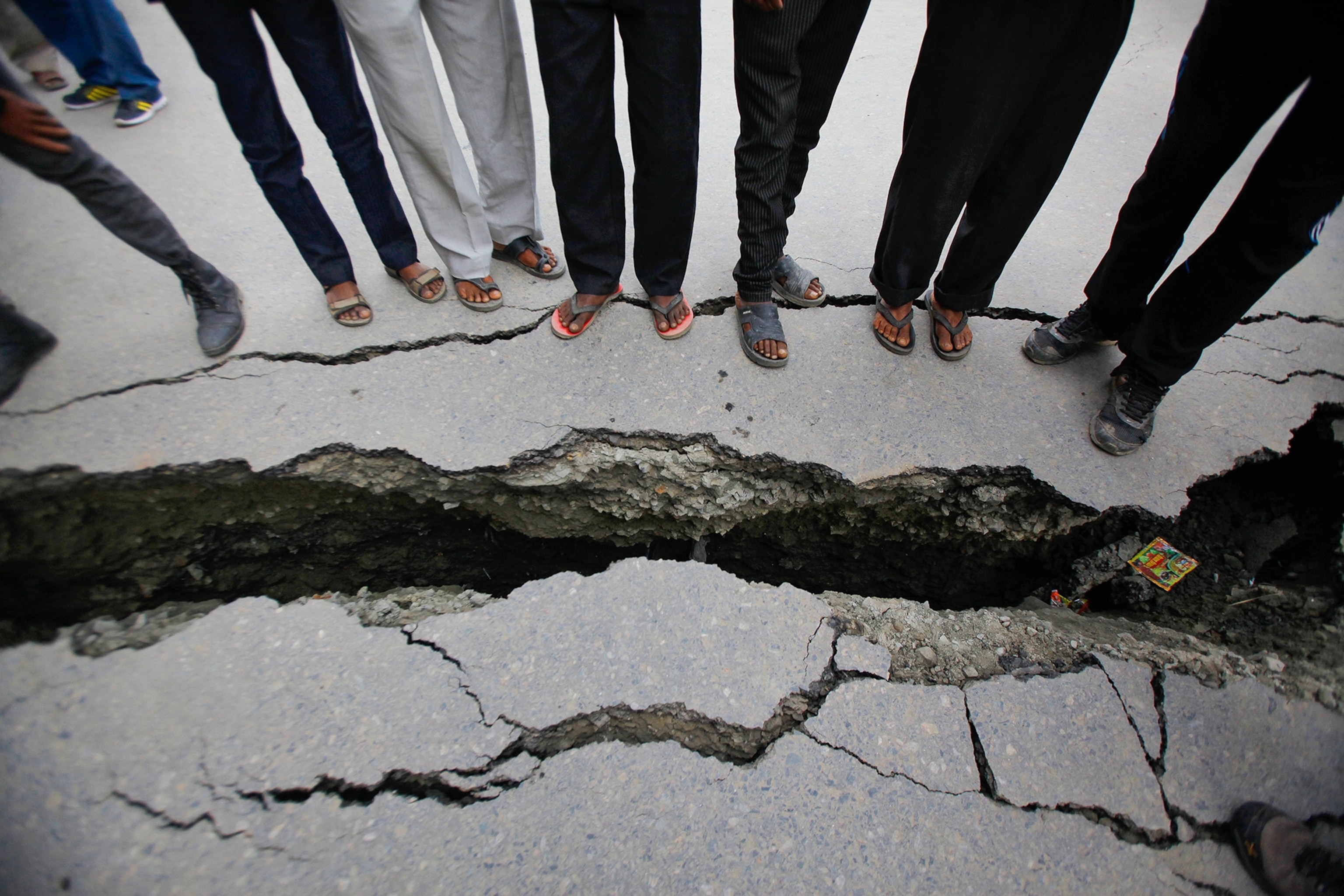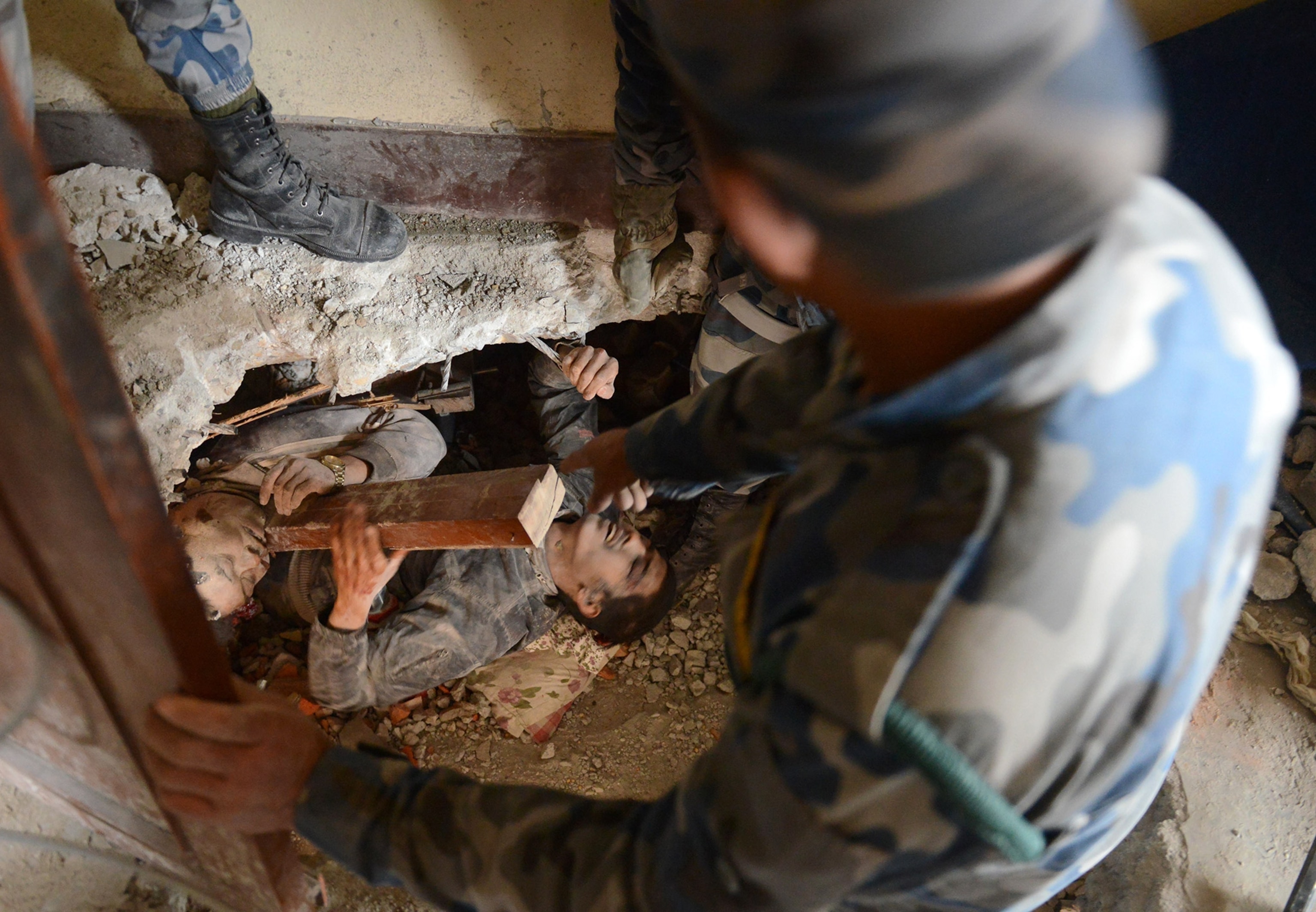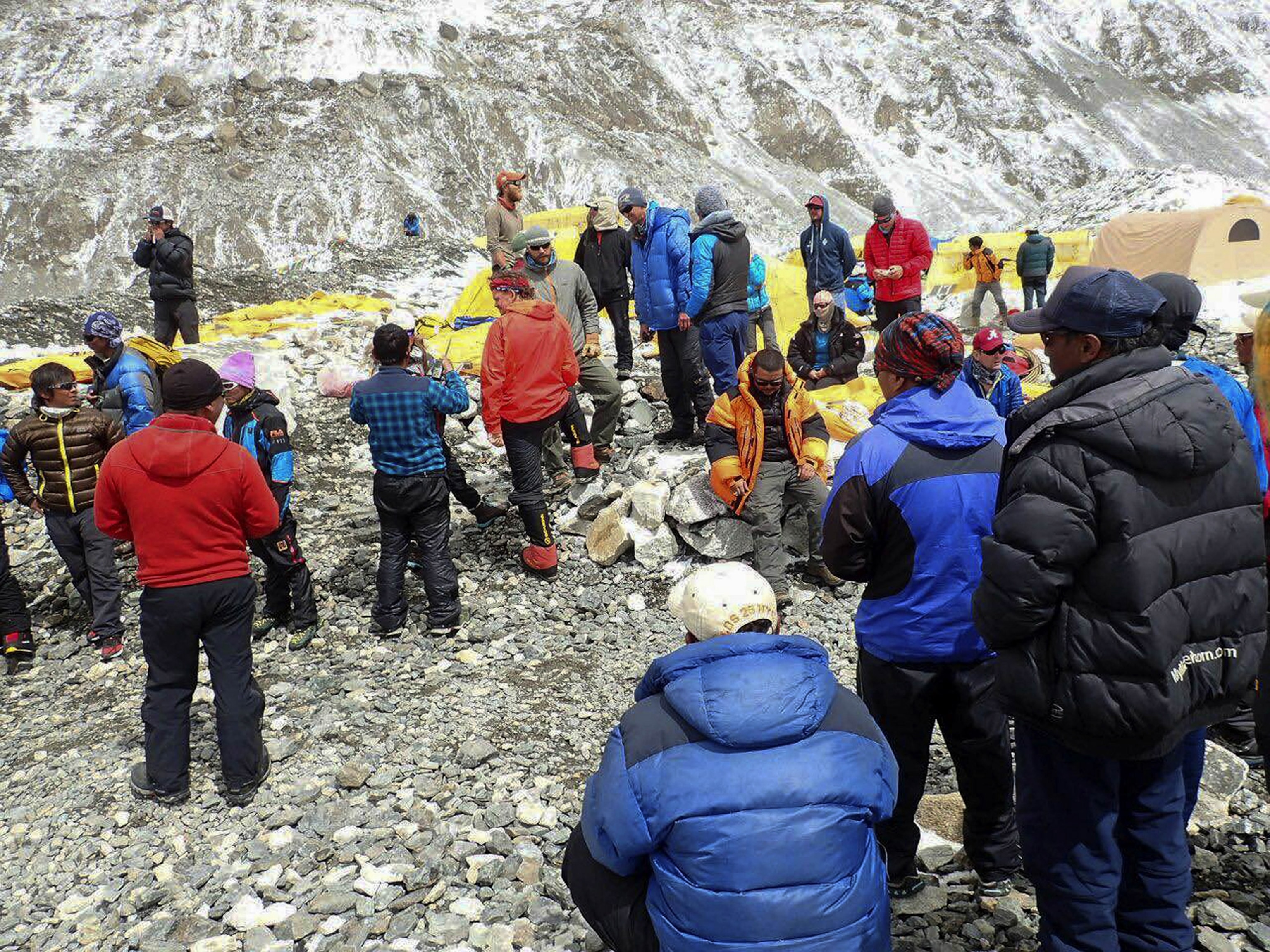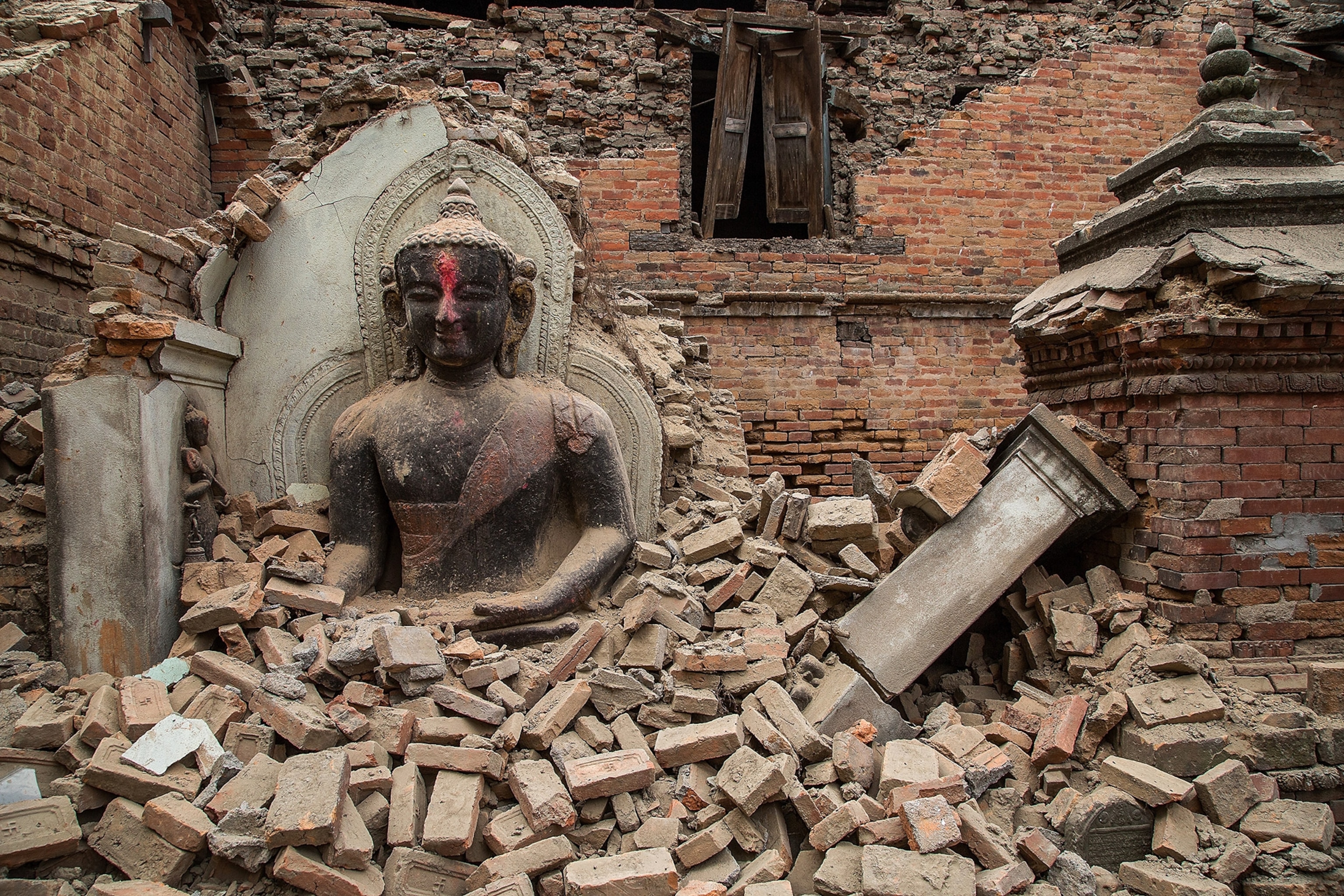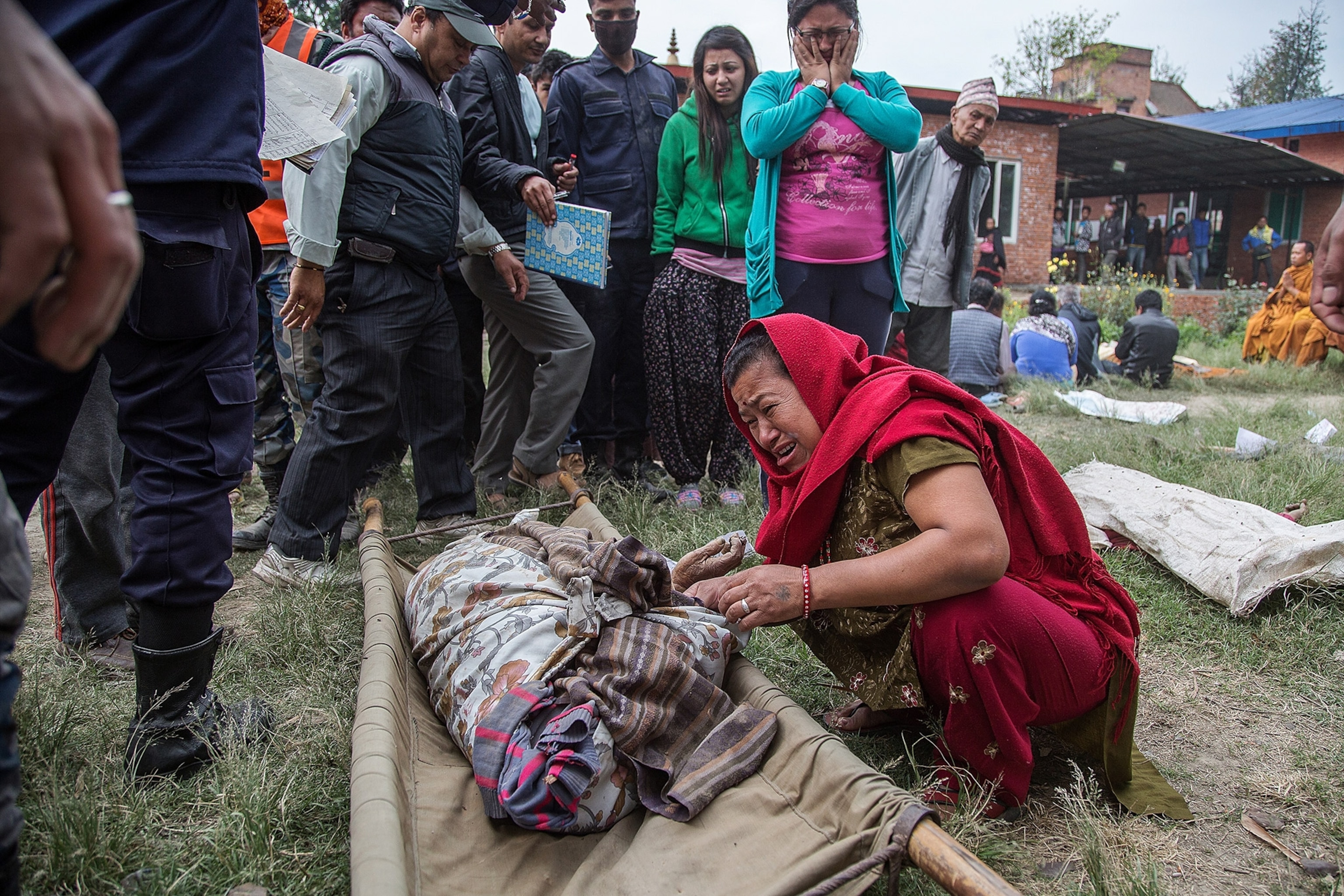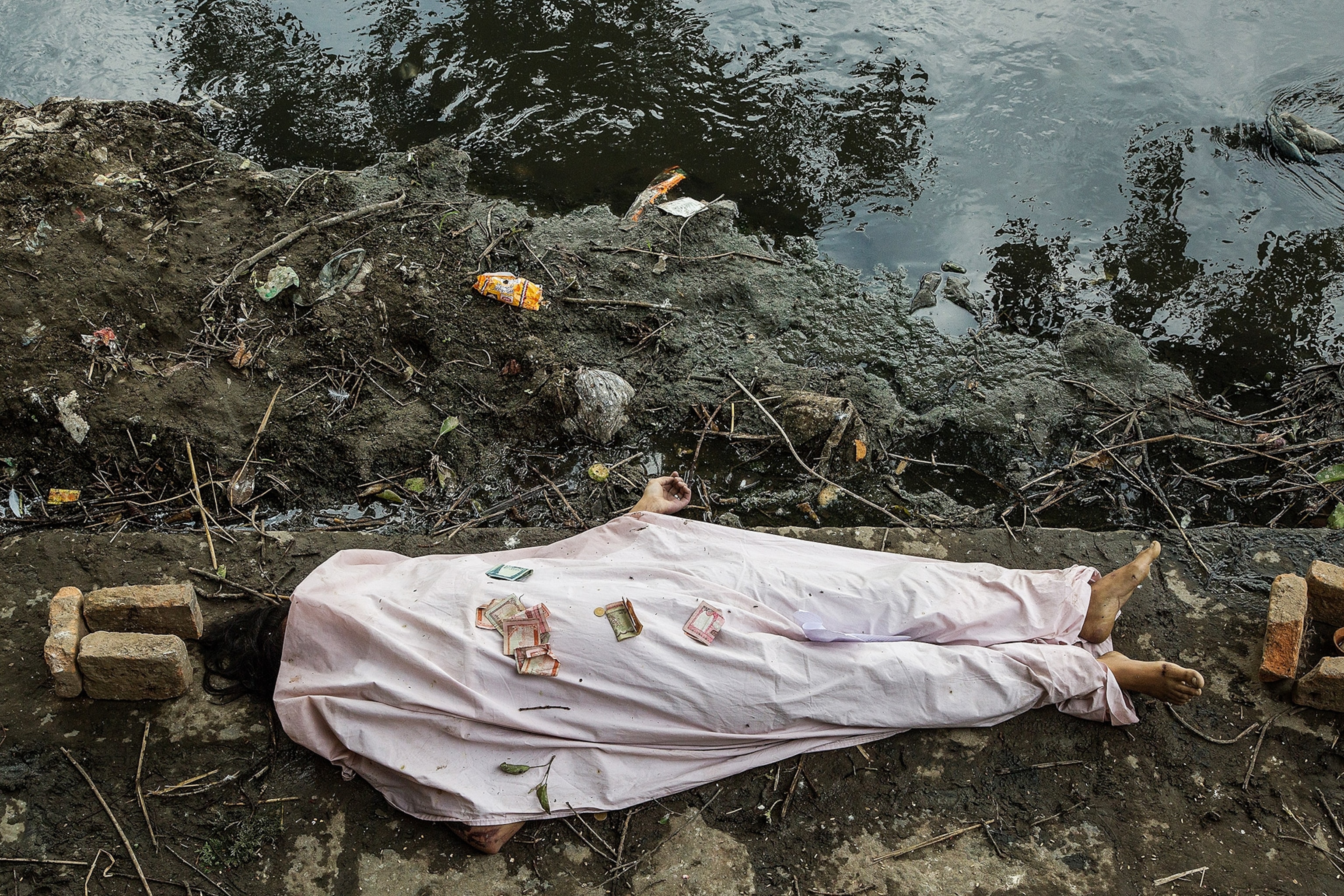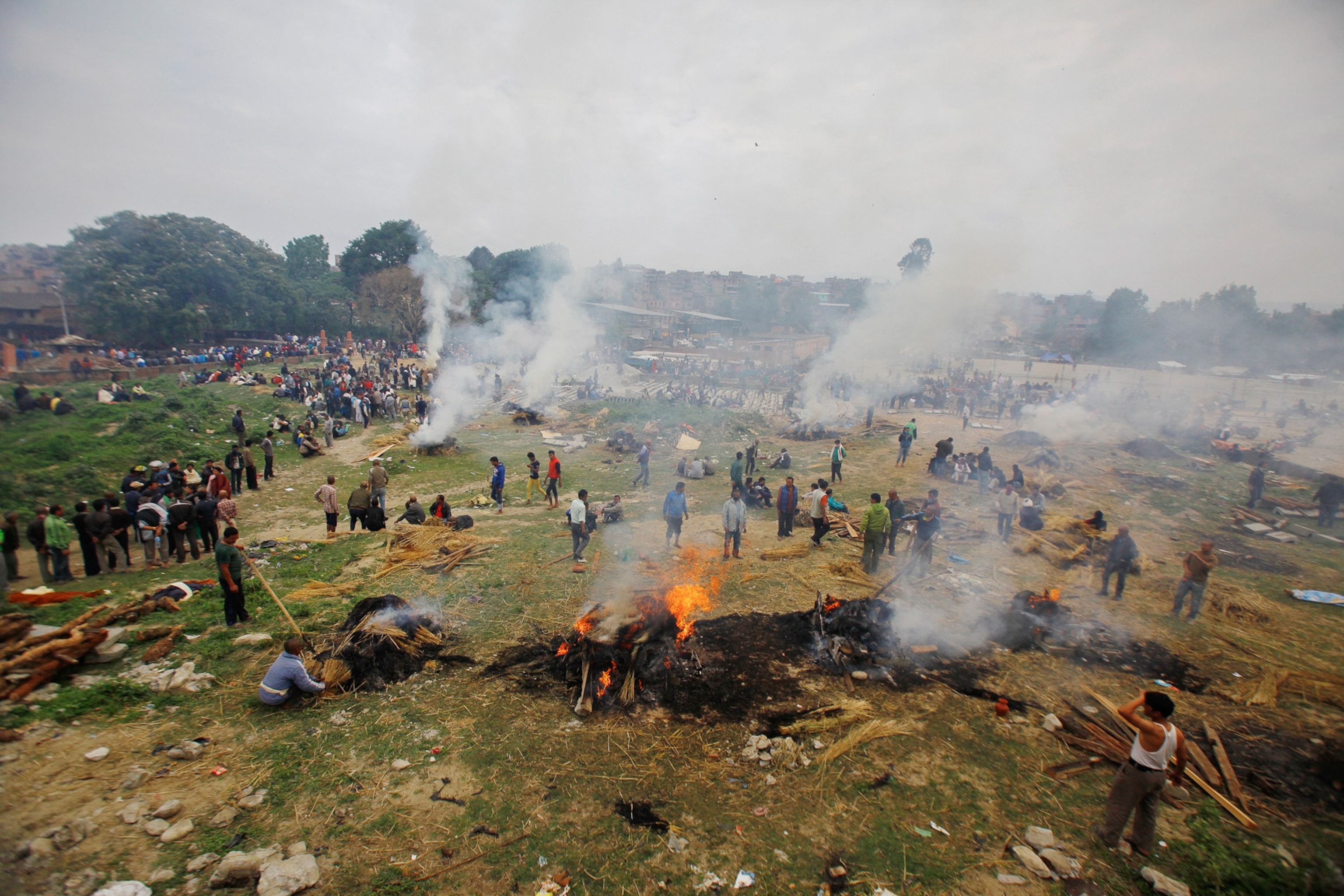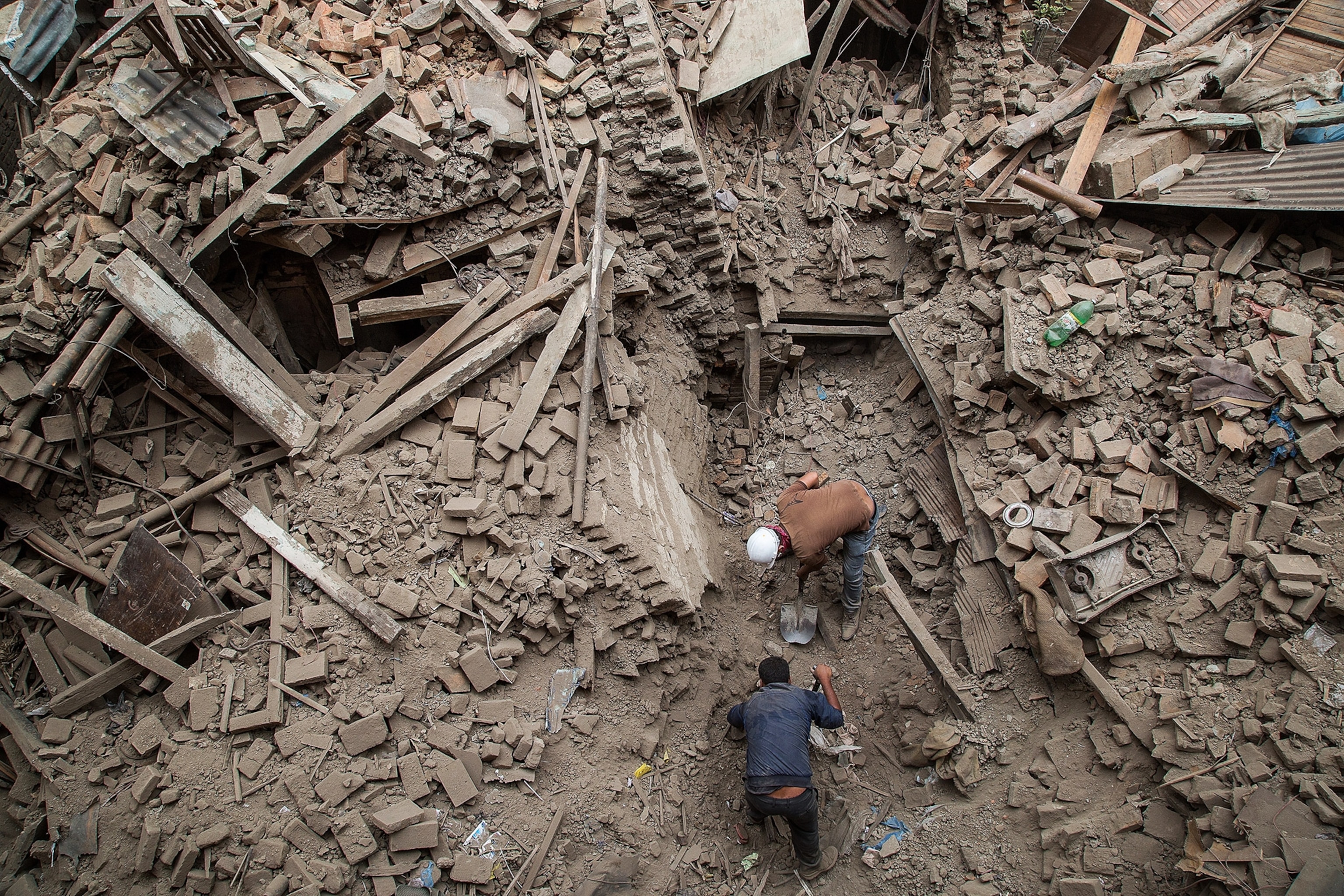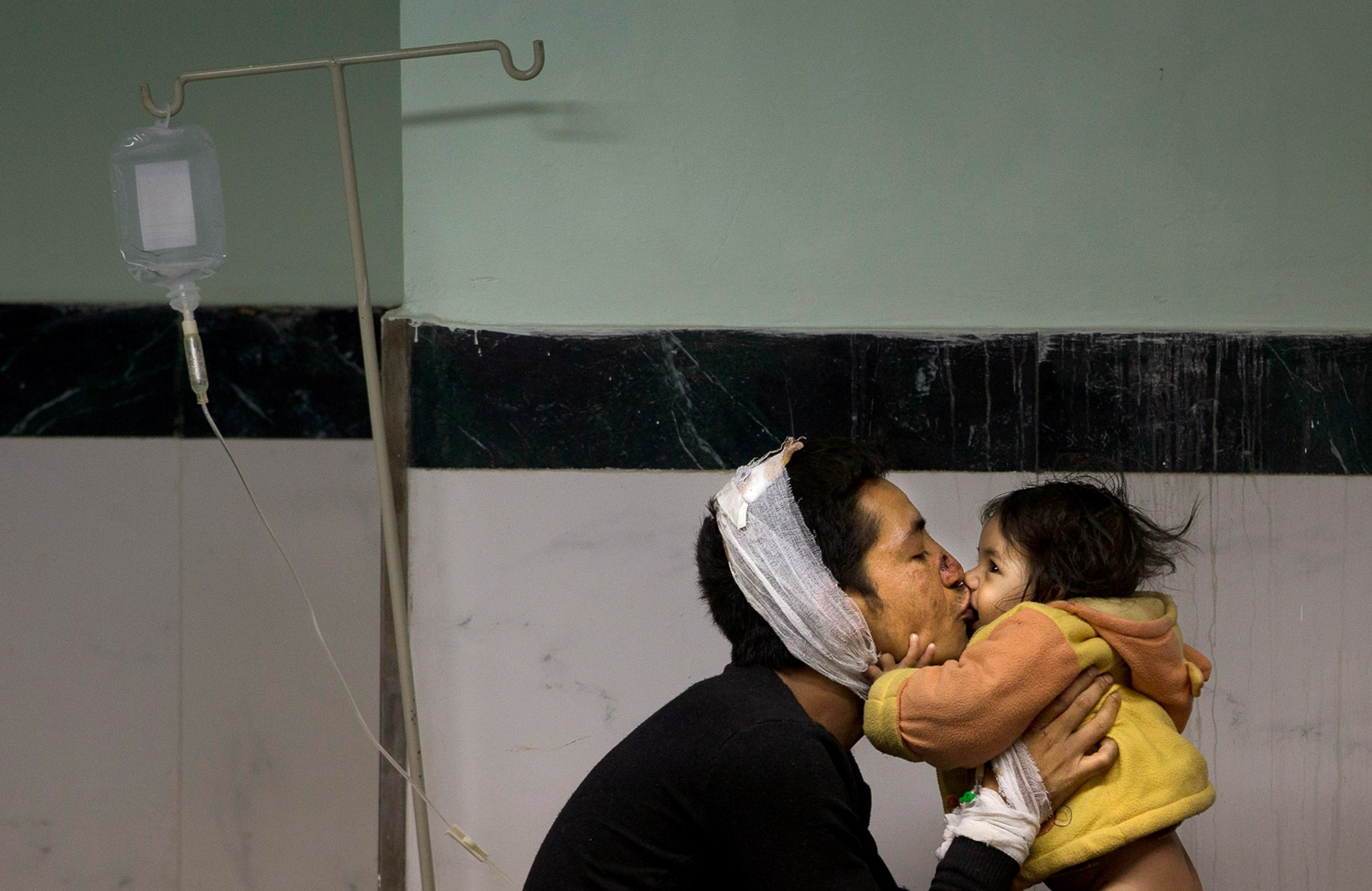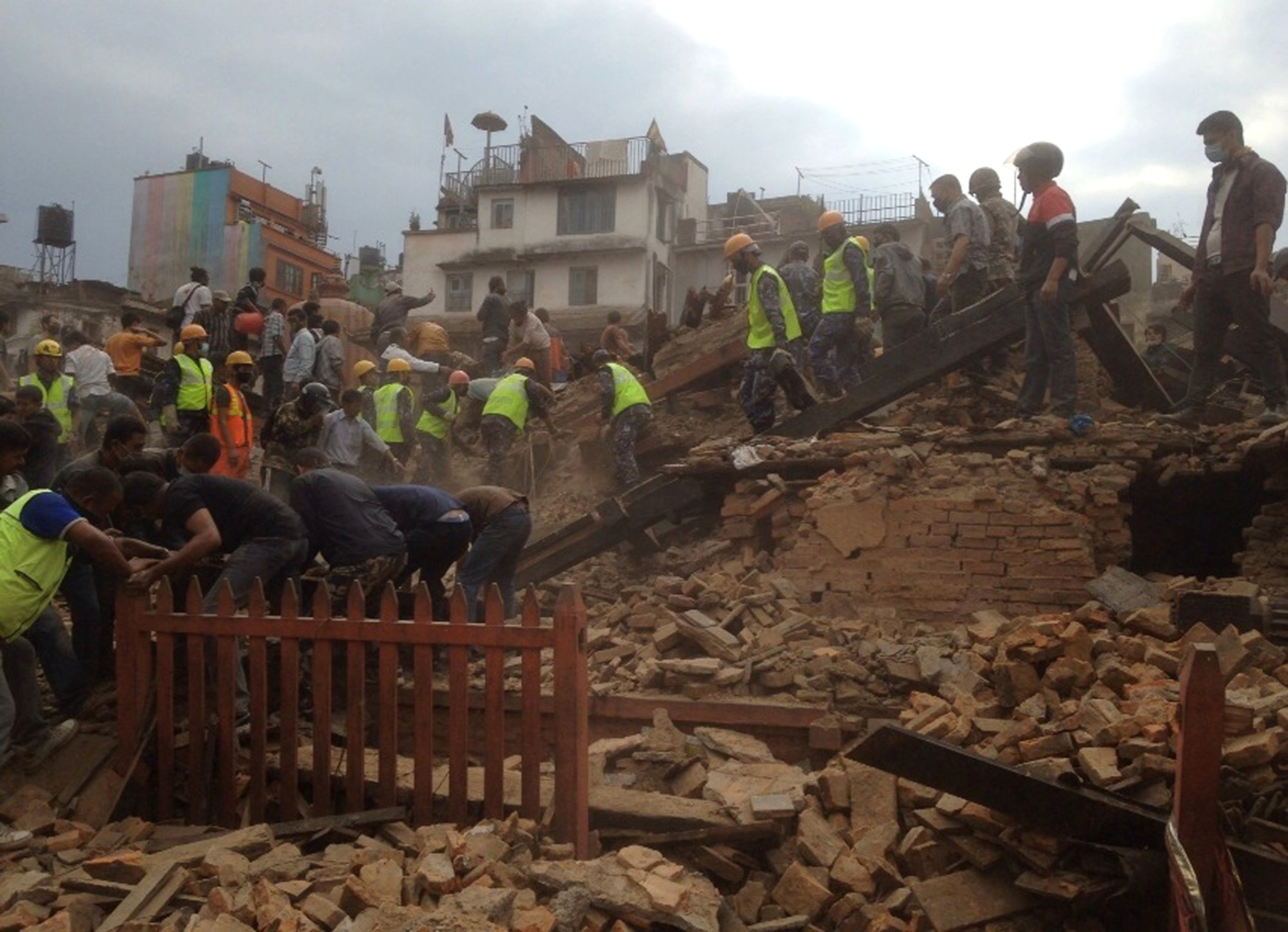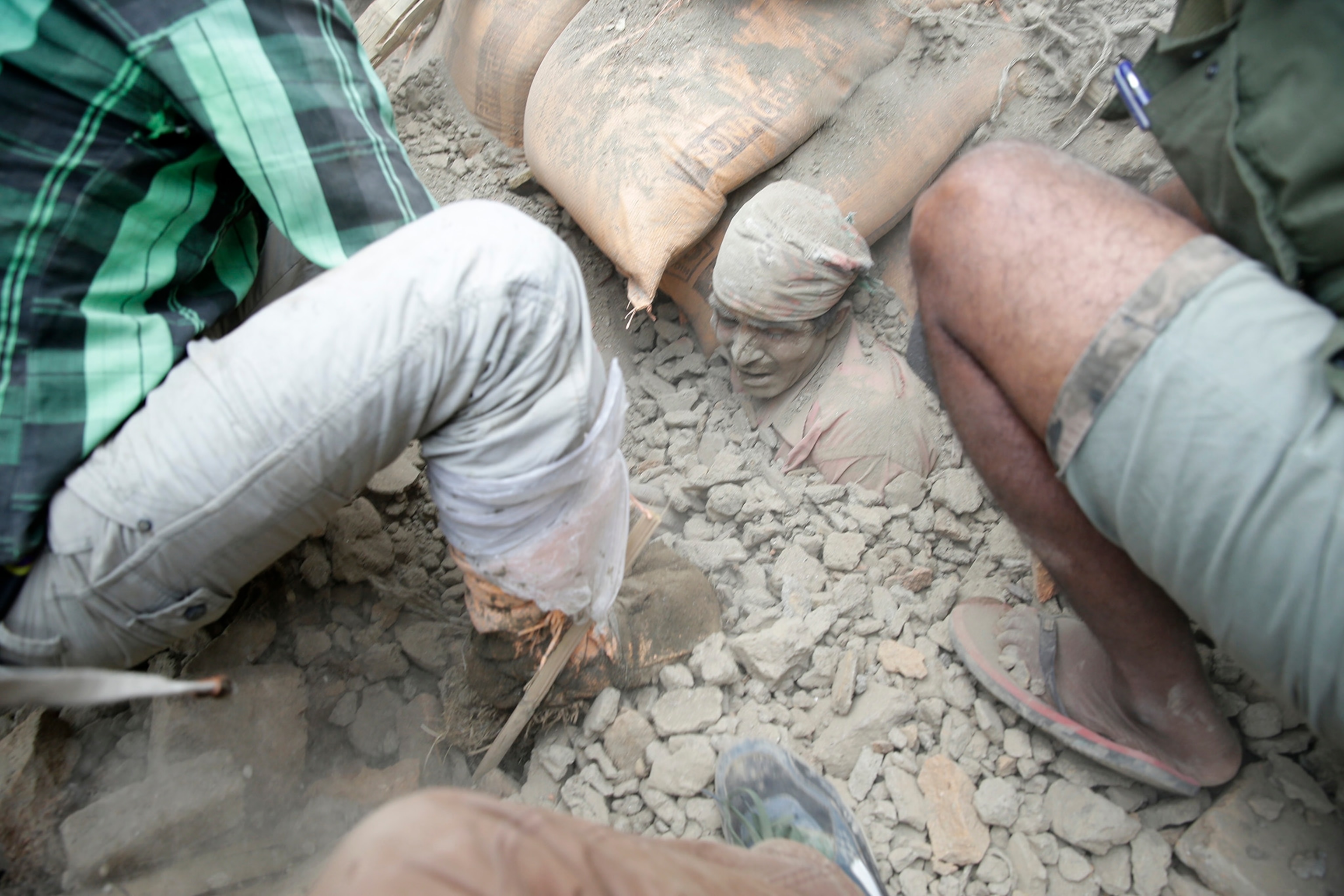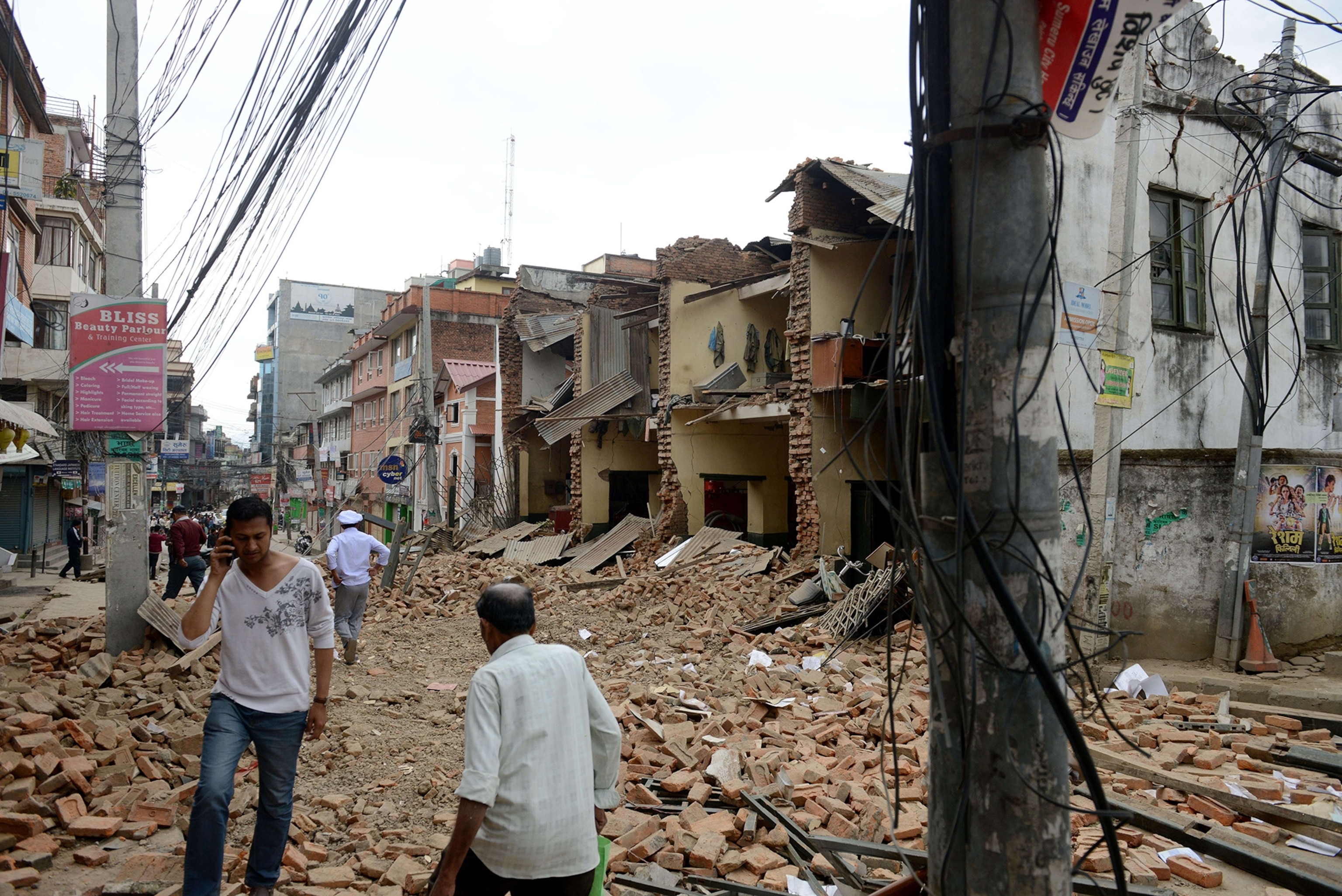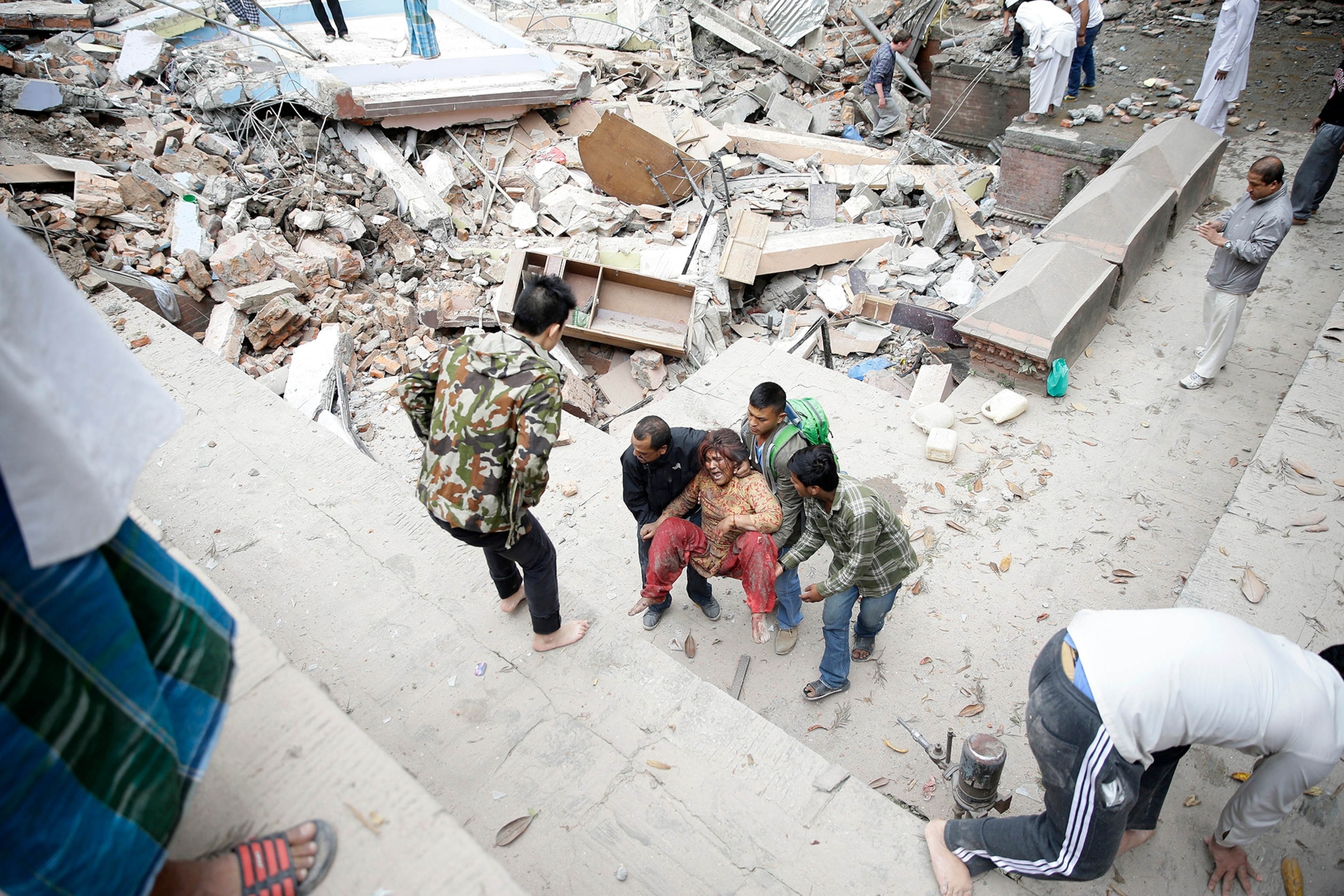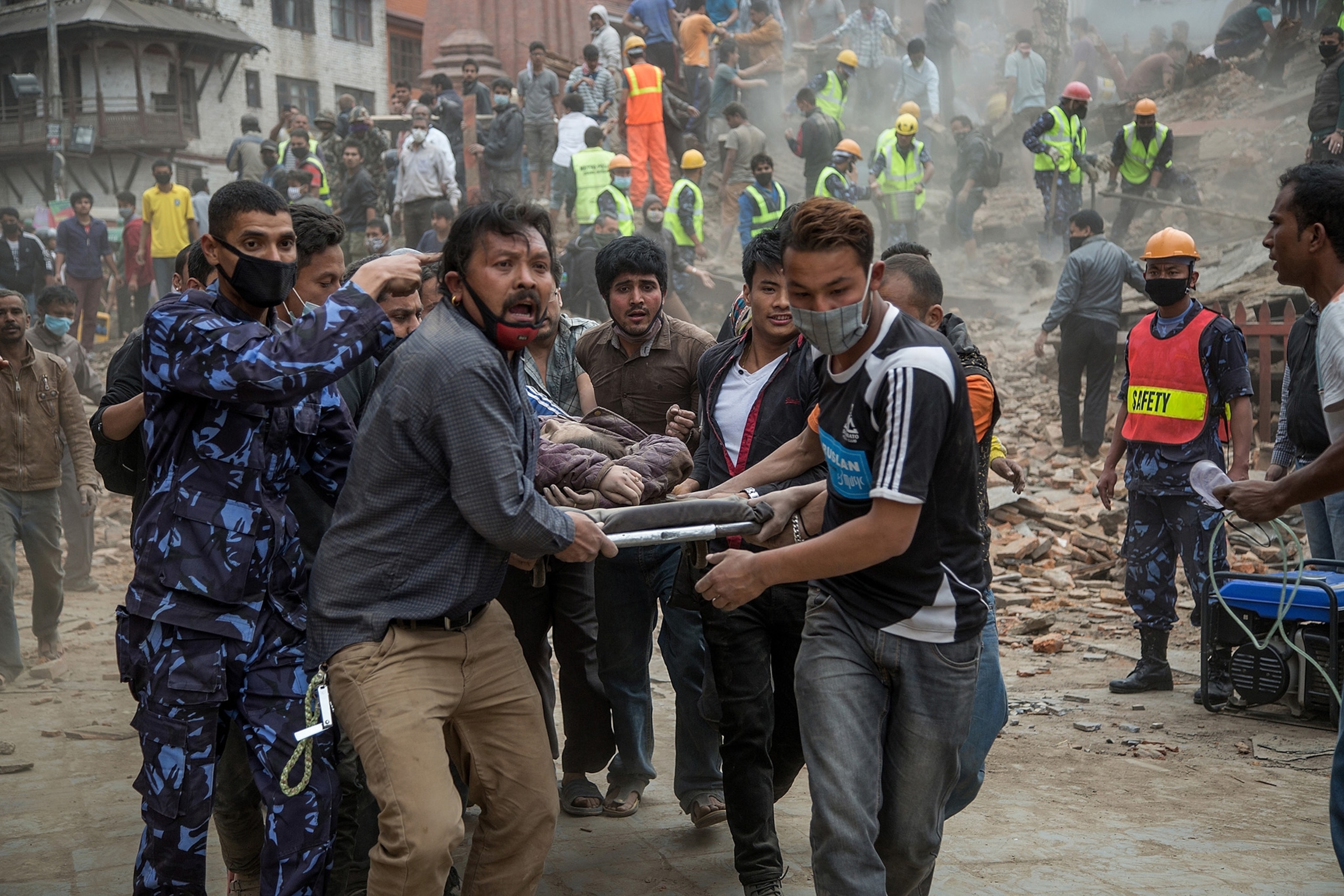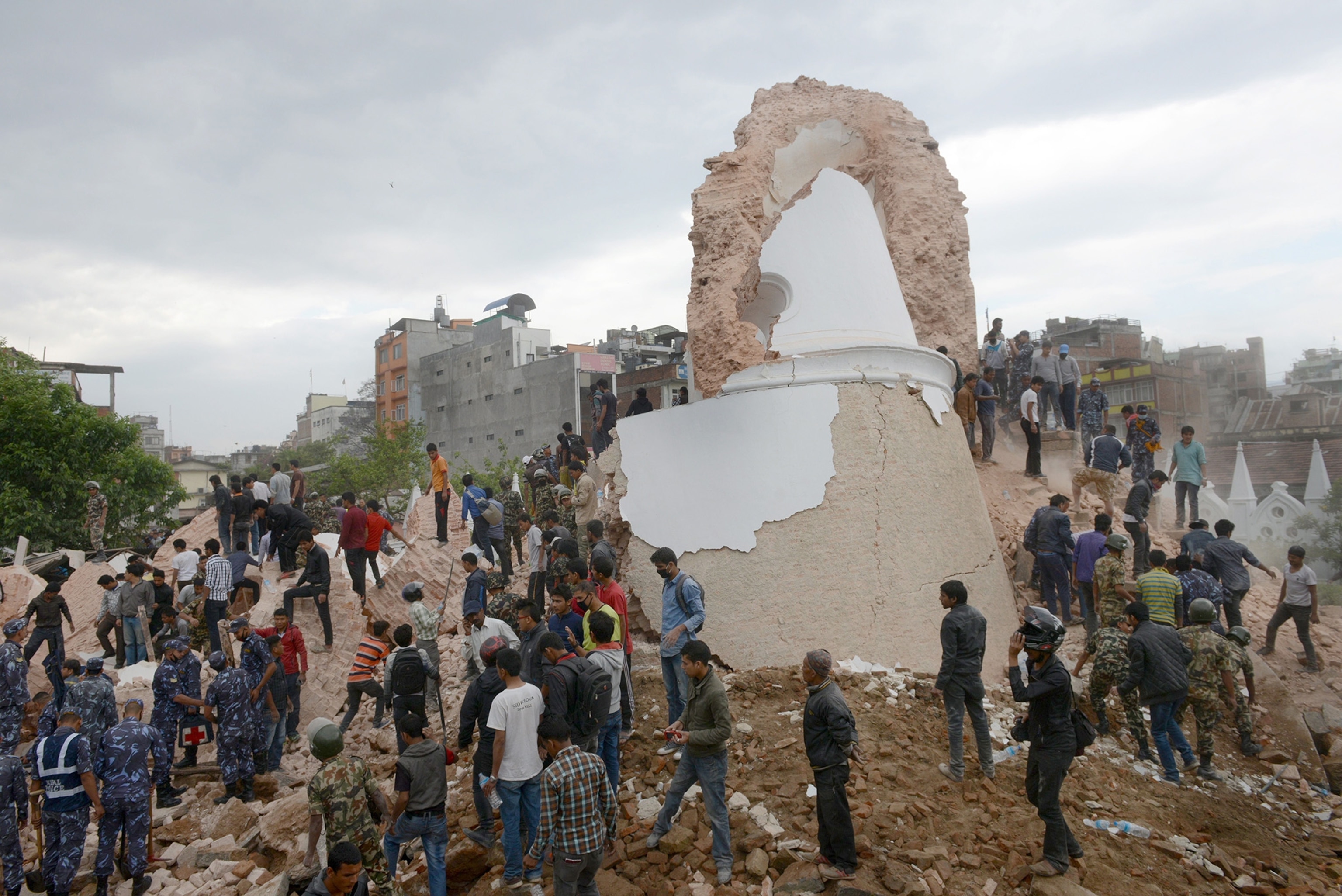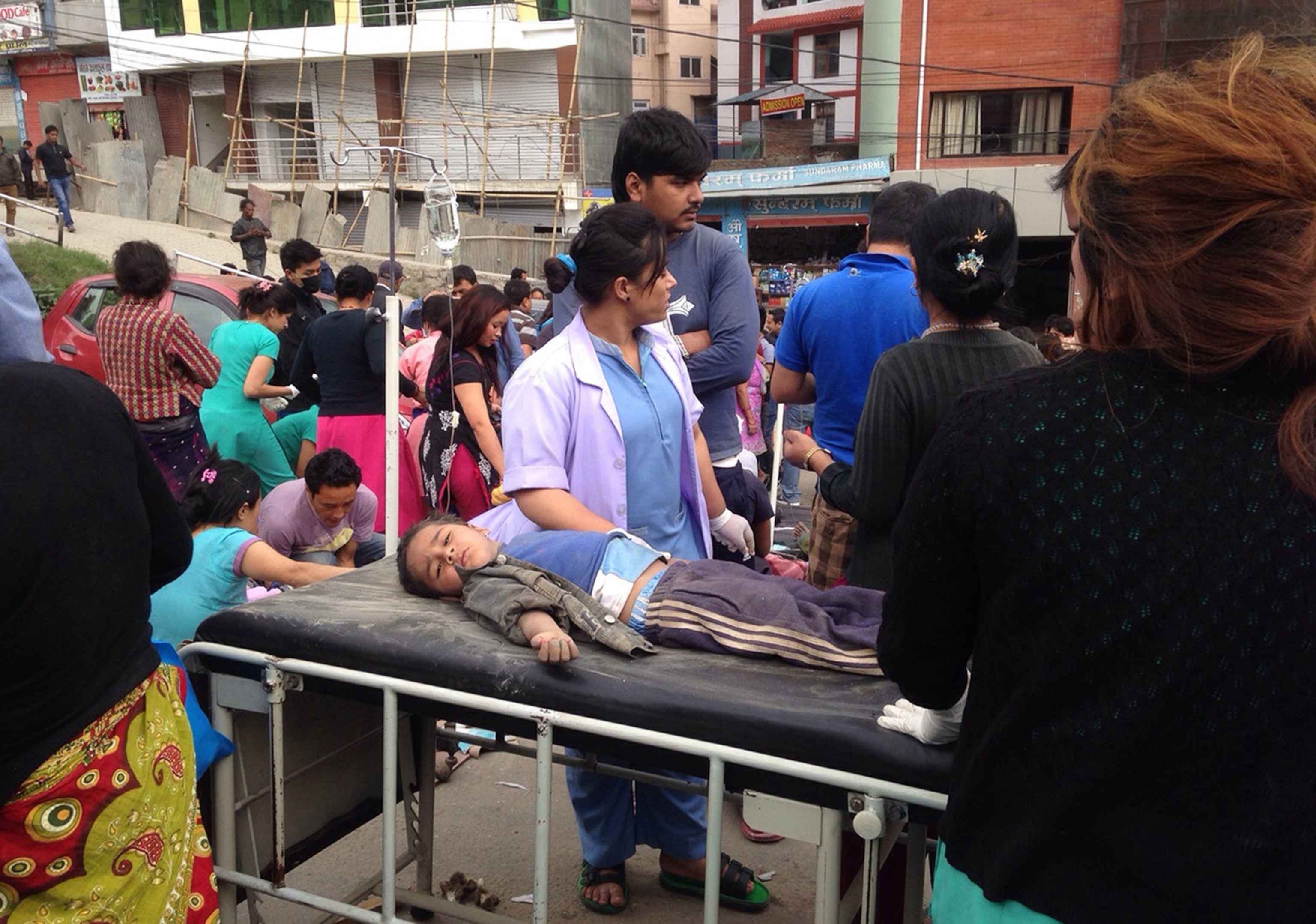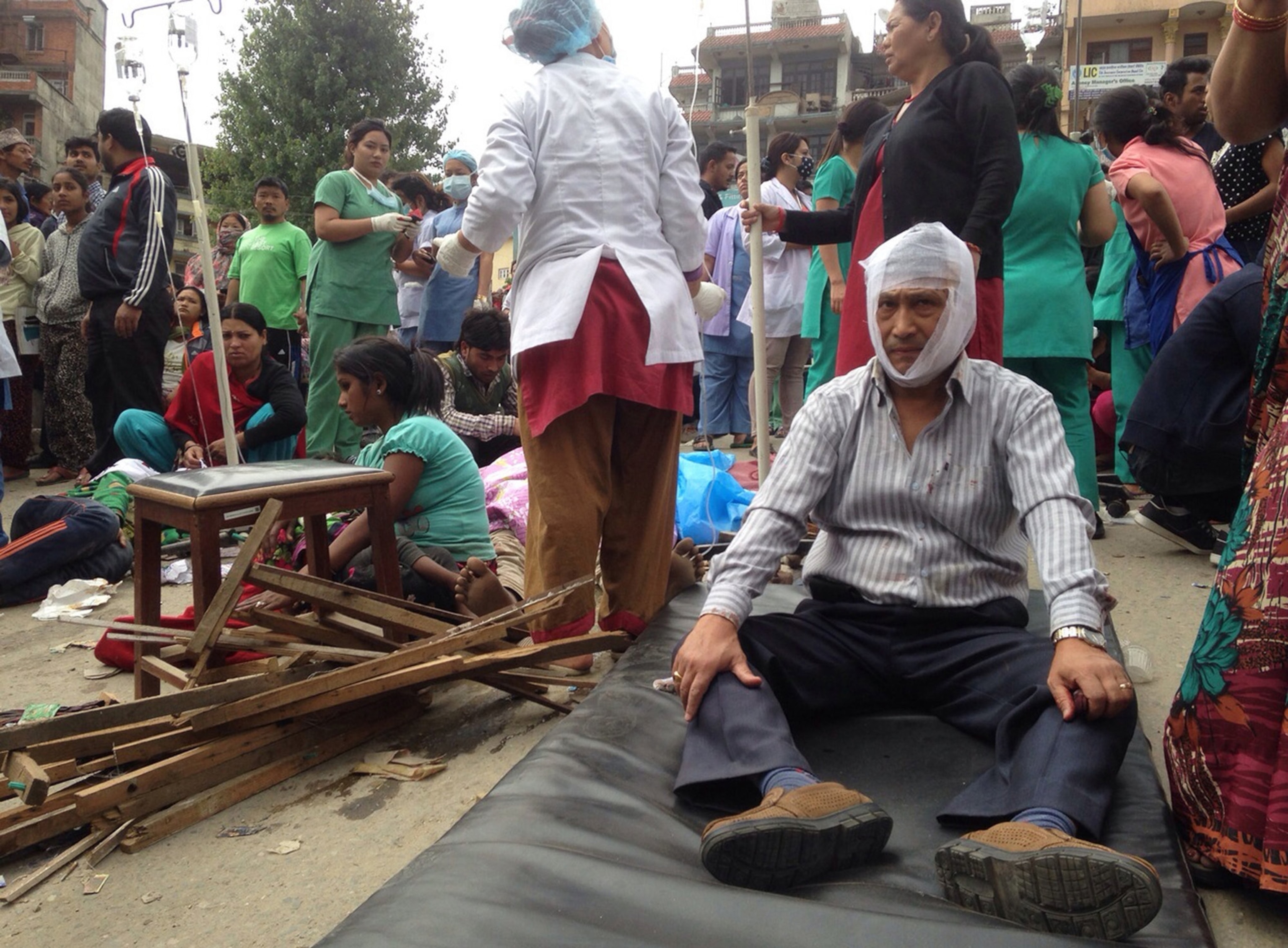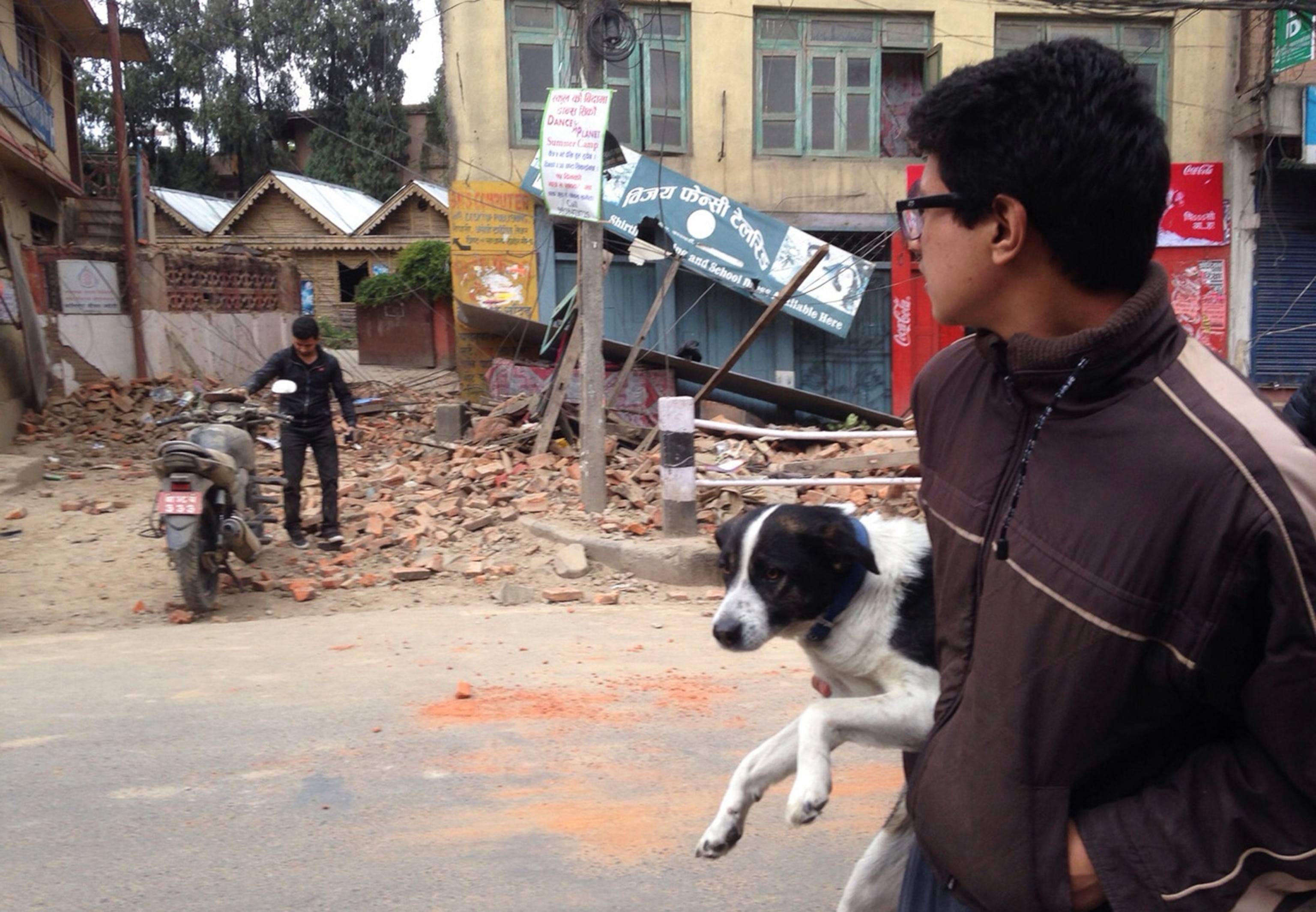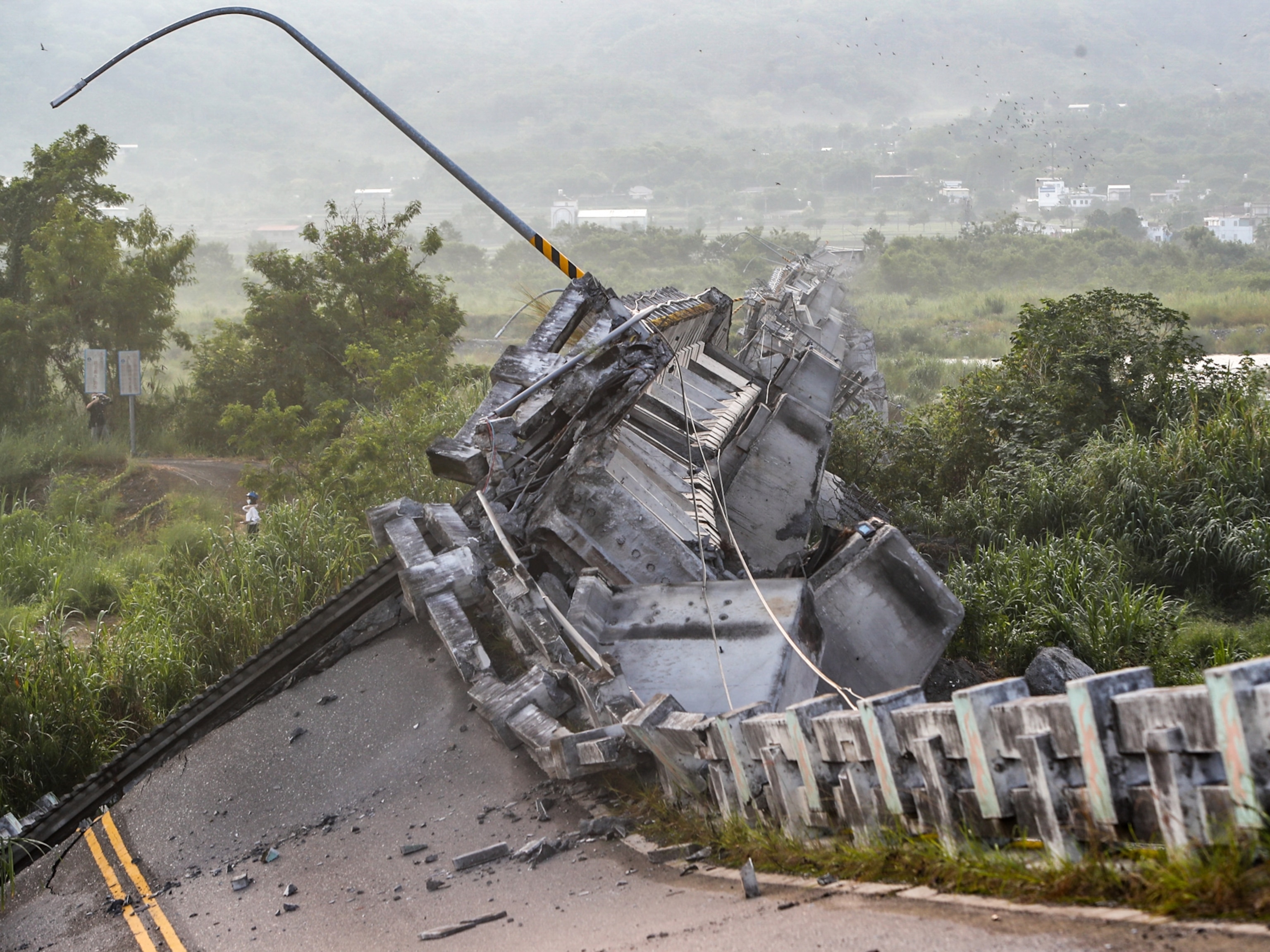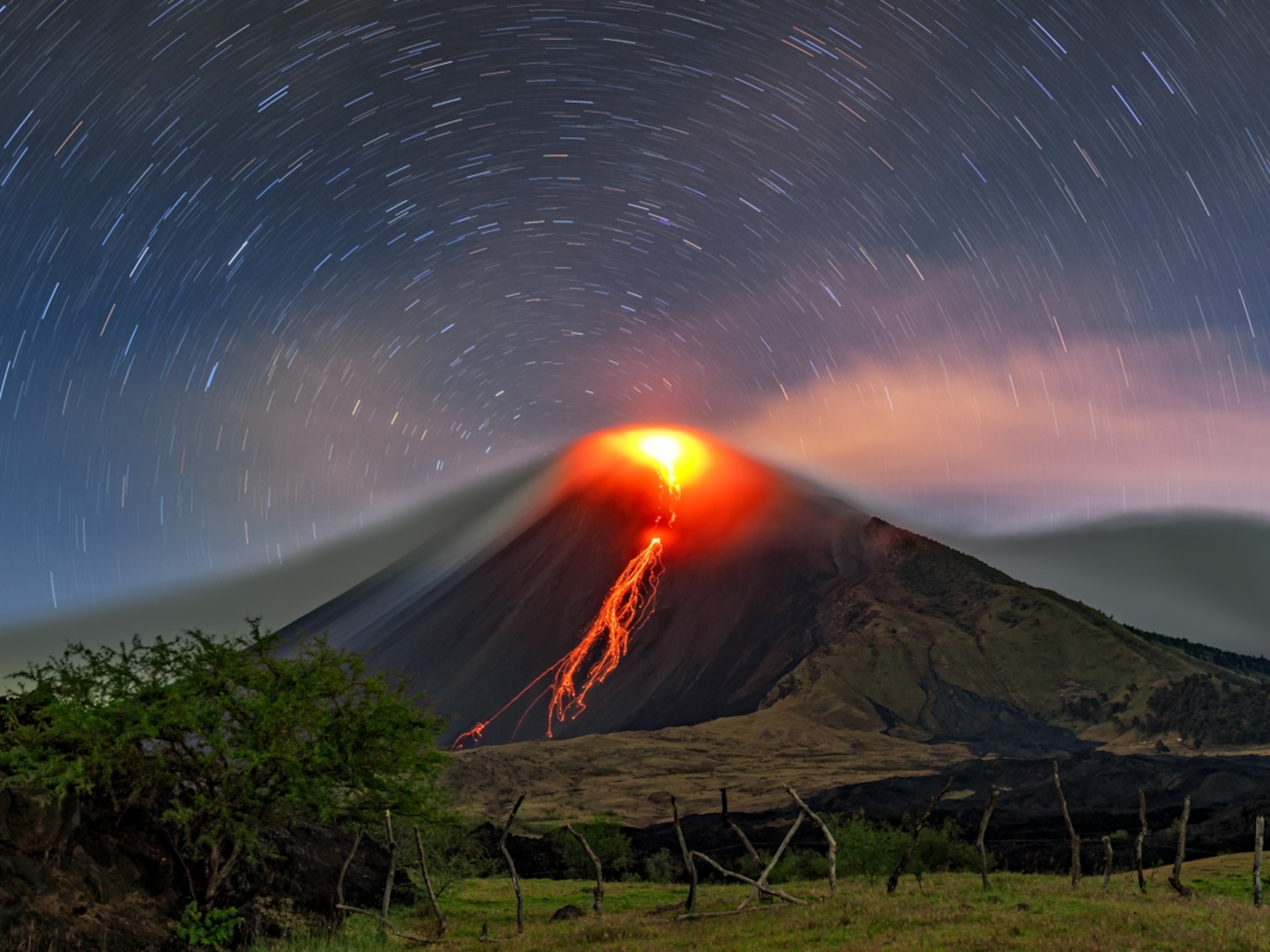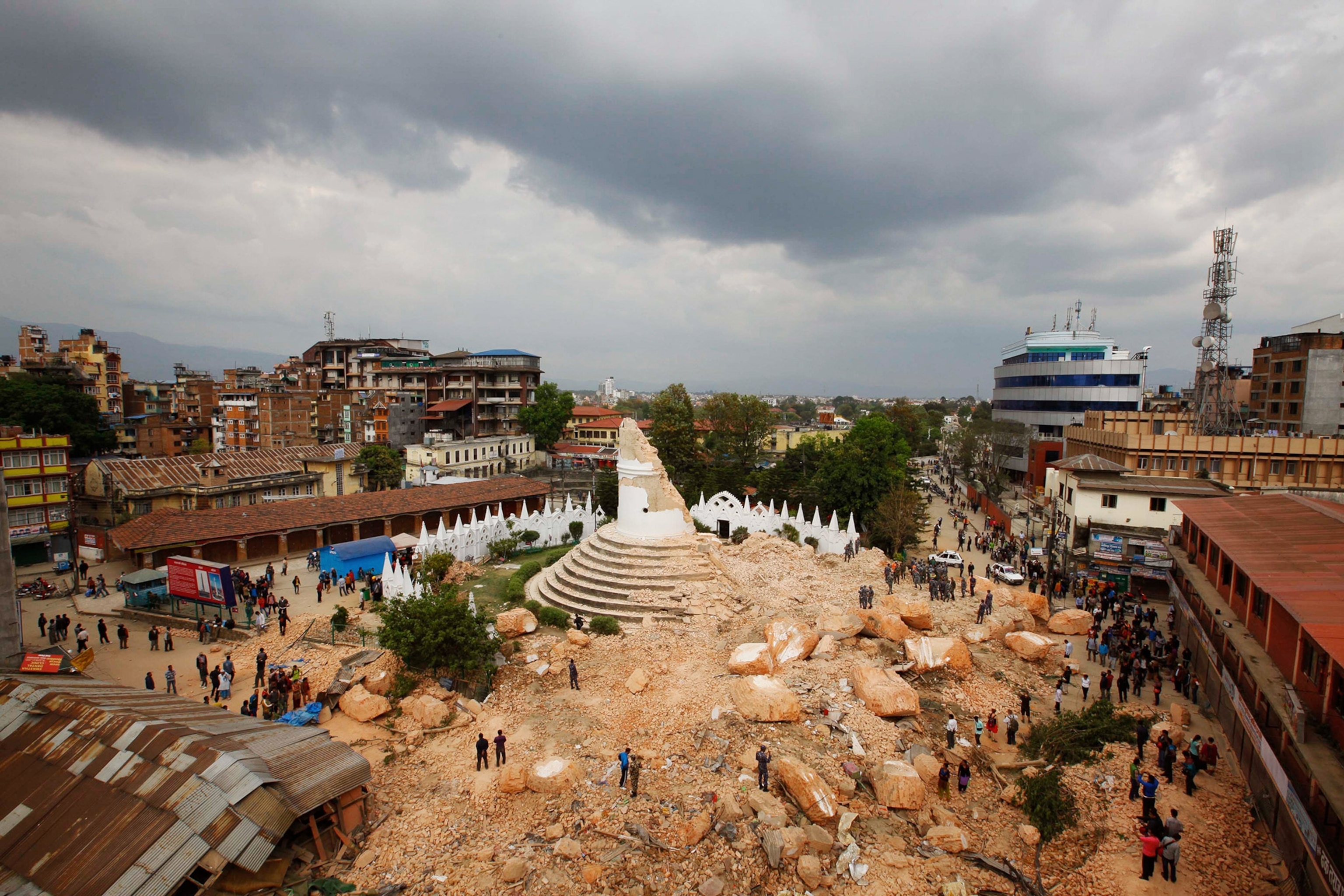
Nepal's 8 Key Historic Sites: What's Rubble, What's Still Standing
Five sites of global cultural and religious significance are reported heavily damaged, but the shrine of Buddha's birthplace appears unharmed.
The collapse of Kathmandu's 183-year-old Dharahara Tower, which once loomed nine stories over the ancient city and modern capital of Nepal, has become a symbol of the nation’s cultural loss in the wake of last weekend's earthquake. (See how the earthquake has devastated Nepal.)
While the 19th-century watchtower was a civic icon, sites of critical importance to the more ancient cultural and religious legacy of Nepal have also been damaged and destroyed by the quake. A country that occupies a mountainous land 1/20 the size of India (approximately the size of the U.S. state of Arkansas), Nepal is nonetheless home to eight UNESCO World Heritage cultural sites. That includes three royal cities and several Hindu and Buddhist sites within the Kathmandu Valley, as well as Lumbini, the legendary birthplace of the Buddha, all of which are in the area affected by the quake. (Read about the discovery of the world's oldest Buddhist shrine.)
Many of these monuments were damaged earlier in the 8.1 magnitude earthquake of 1934 and were subsequently rebuilt—a testament to the role they play in the lives of the Nepalese and the 1.5 billion Hindus and Buddhists elsewhere around the world. (Learn about the history of earthquakes in Nepal.)
“These monuments are not museums or beautifully ornate structures but special places on the earth where it is possible for ordinary people to reach out and commune with their guiding goddesses and gods,” says Robin Coningham, an archaeologist at Durham University and a director of excavation at Lumbini. “Literally, they are portals where heaven touches the earth and they are the center point for the daily, weekly and monthly lives of millions.”
Nepal is still suffering significant aftershocks, and communications—particularly in mountainous and remote areas where many of the nation’s cultural monuments can be found—are extremely limited or non-existent. But this is what we know so far about the fate of Nepal’s World Heritage sites:
Kathmandu Durbar Square

Nepal’s Durbar Squares, also known as “noble courts” or “palace squares,” are the historical heart of the country’s cities and are centered around palaces, temples and public places.
In Kathmandu, Durbar Square has sustained severe damage; parts of the Hanuman Dhoka, the city’s oldest palace—built by the Malla kings in the 16th century—have collapsed, along with the pagodas of several temples.
A video taken by a tourist shows the moment the earthquake strikes Kathmandu Durbar Square:
Bhaktapur Durbar Square
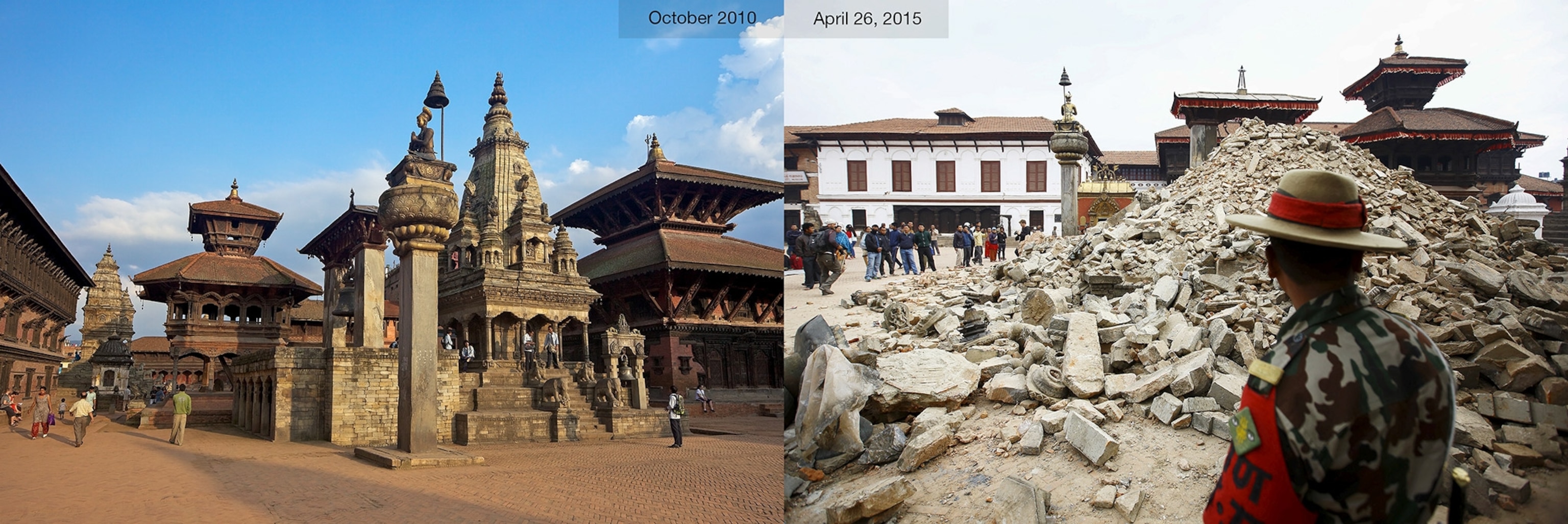
Bhaktapur, the “City of Devotees” is located 12 miles (20 km) east of Kathmandu and is the best preserved of Nepal’s old cities, despite being severely damaged in the 1934 quake. Coningham has reported that up to 80% of the temples around its Durbar Square are destroyed, including the 18th-century Vatsala Durga temple, a towering sandstone structure that evoked the peaks surrounding the city.
Boudhanath Temple
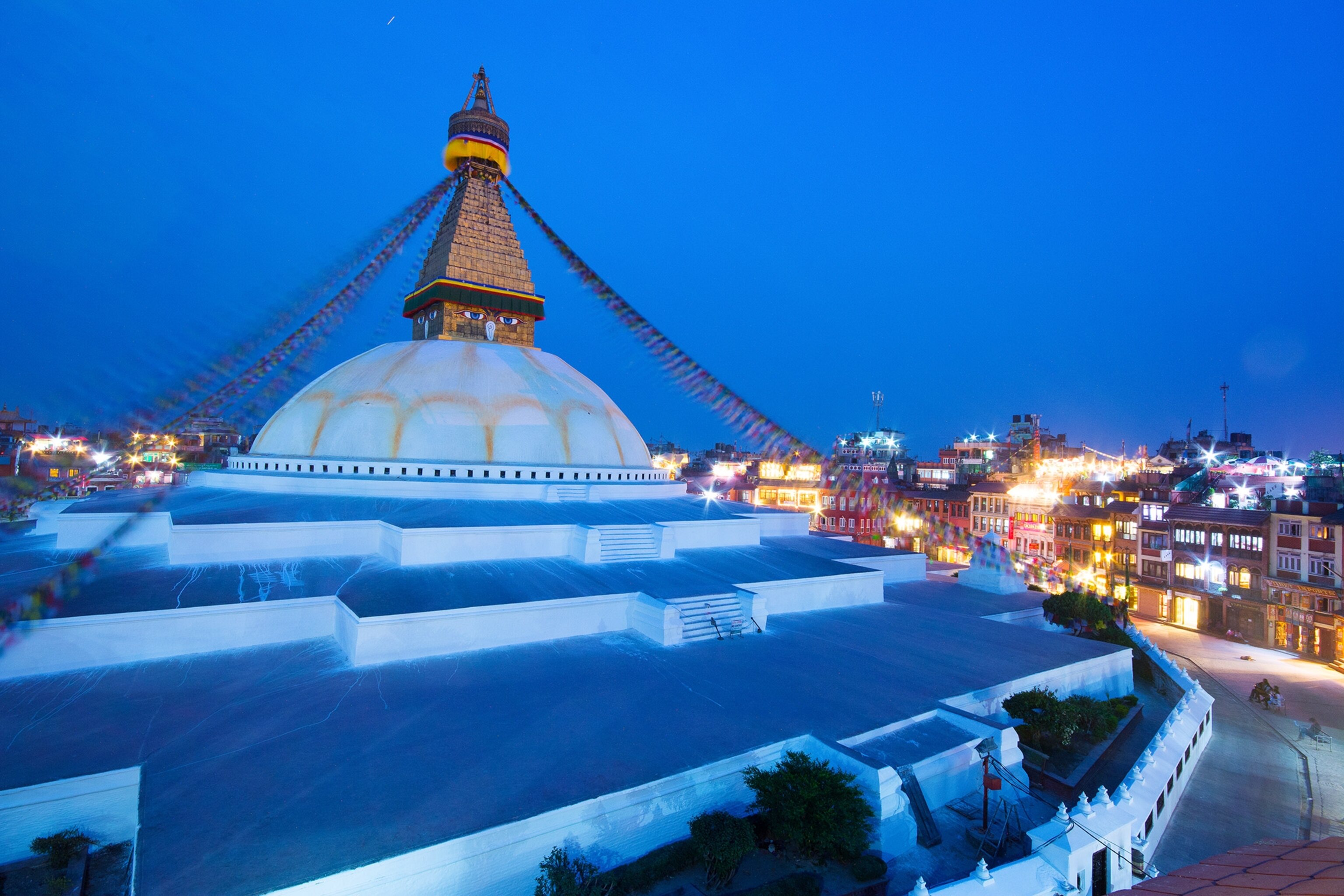
The fifth-century AD stupa—a mound housing sacred relics—of Boudhanath is among the largest in the world and serves as a center of pilgrimage for Nepalese and Tibetan Buddhists. Located about six miles (10 km) from Kathmandu, it is surrounded by a complex of more than 50 gompas, or Tibetan monasteries. While there appears to be significant damage to surrounding structures, the 1500-year-old stupa has survived, with reports of cracks in the spire.
Reports on Twitter suggest that the Boudhanath stupa is relatively undamaged:
Changu Narayan
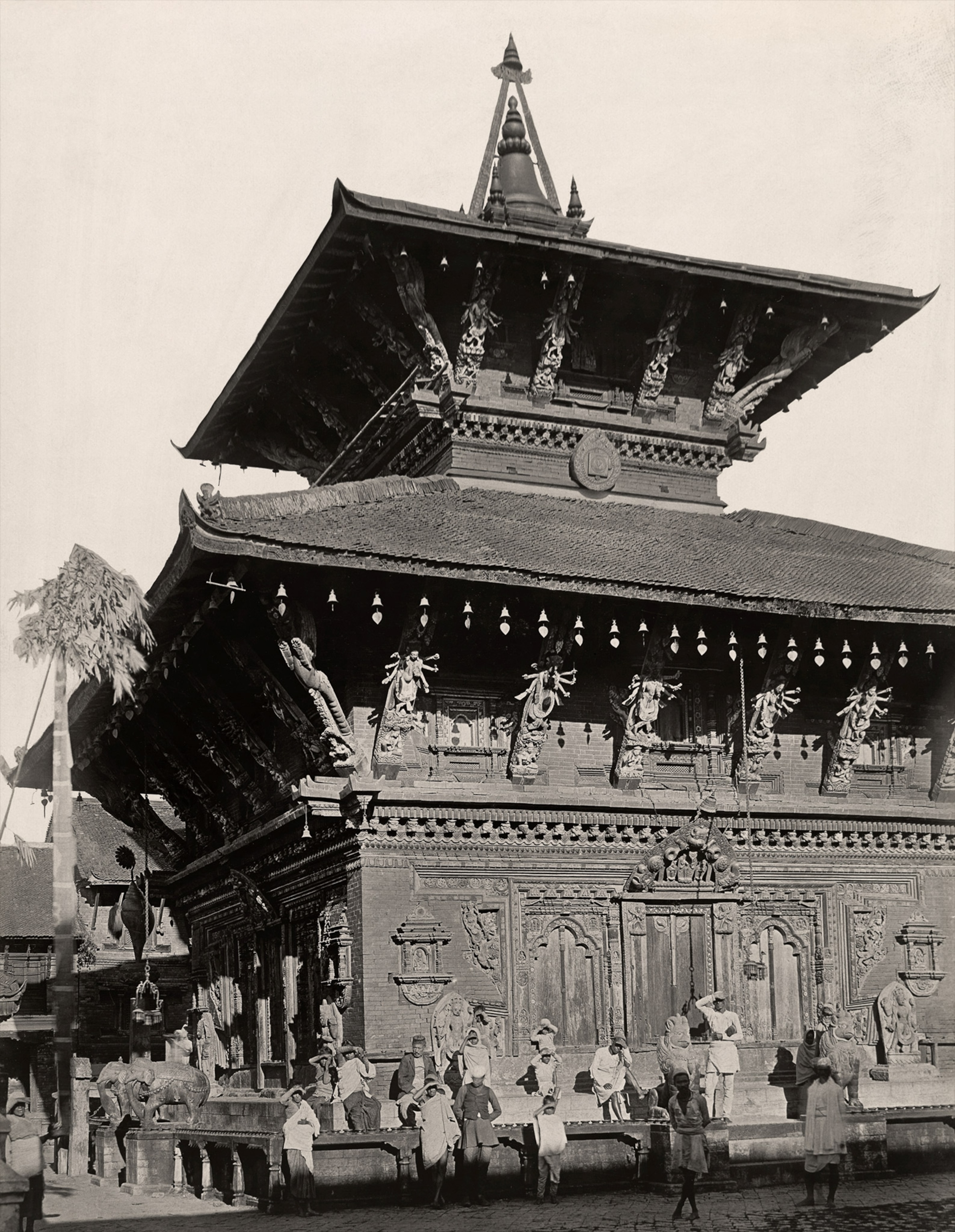
One of the oldest Hindu temples in Nepal, Changu Narayan is dedicated to the Hindu god Vishnu and believed to have been built in the 5th century A.D. Located on a hilltop east of Kathmandu, the two-tiered pagoda is considered one of Nepal’s most unique architectural monuments. The extent of damage at Changu Narayan, if any, remains unknown. It appears above in a 1920 photo from National Geographic's archive. (See 13 Pictures That Capture the Wonder and Thrill of Archaeology.)
Lumbini
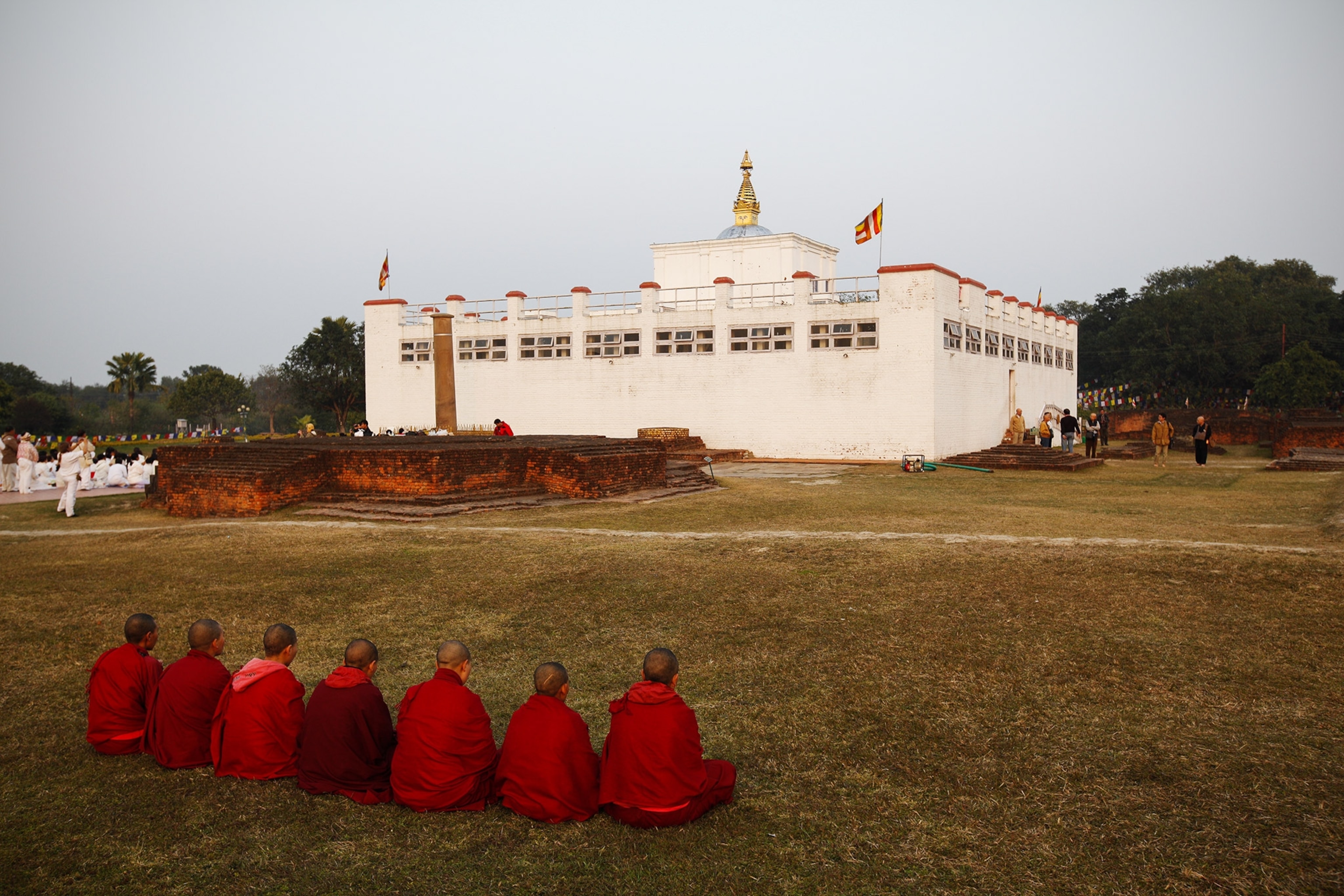
Dated to the sixth century B.C., Lumbini is the oldest Buddhist shrine in the world as well as the legendary site of the Buddha’s birth. Coningham says that a massive frame surrounding the Maya Devi temple, marking the god’s birthplace, has protected the site from earthquake damage.
Pashupatinath Temple

Pashupatinath Temple vies with Changu Narayan as the oldest Hindu temple in Nepal and is considered one of the most important temples dedicated to the Hindu god Shiva, the Destroyer. It appears to have survived the earthquake, and Nepalis are bringing victims to temple to perform last rites.
The temple is now the site of last rites for hundreds of earthquake victims:
Patan Durbar
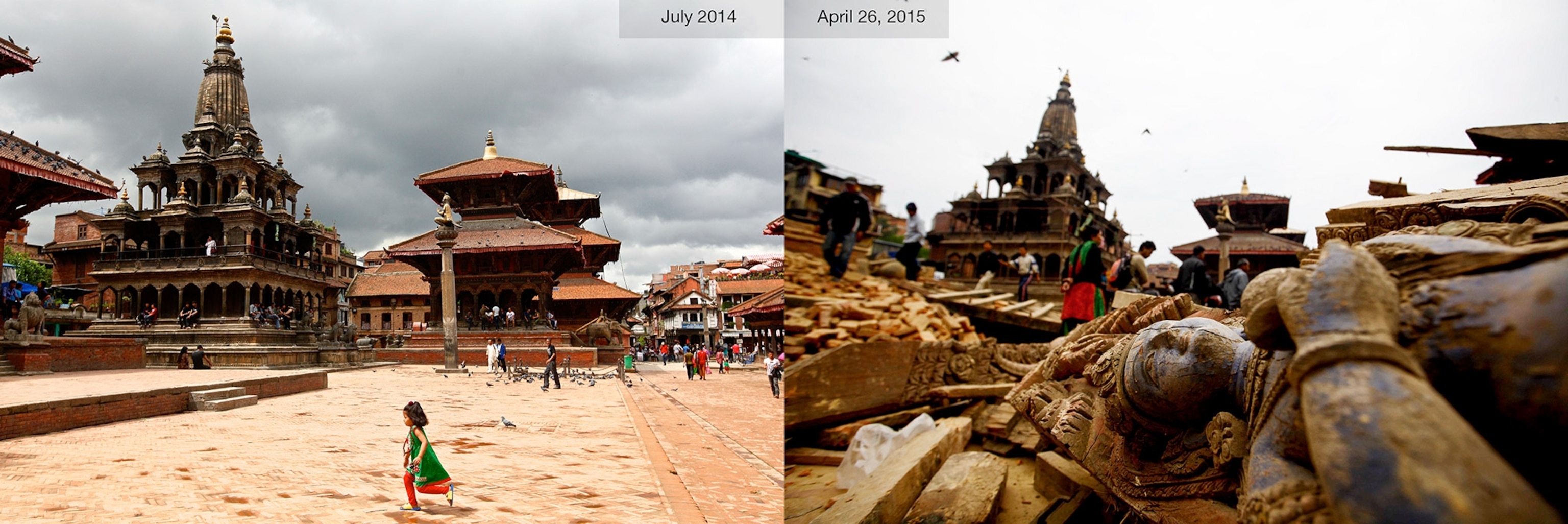
Located in modern Lalitpur in the south-central Kathmandu Valley, the Patan Durbar is a royal palace complex built in the 17th century and is the seat of one of Nepal’s three kingdoms. According to Coningham, the recently restored Sundari Chowk (courtyard), as well as the most important temple in the Durbar Square, the Krishna Mandir, have survived. However, many smaller pagoda temples have collapsed.
Swayambhunath
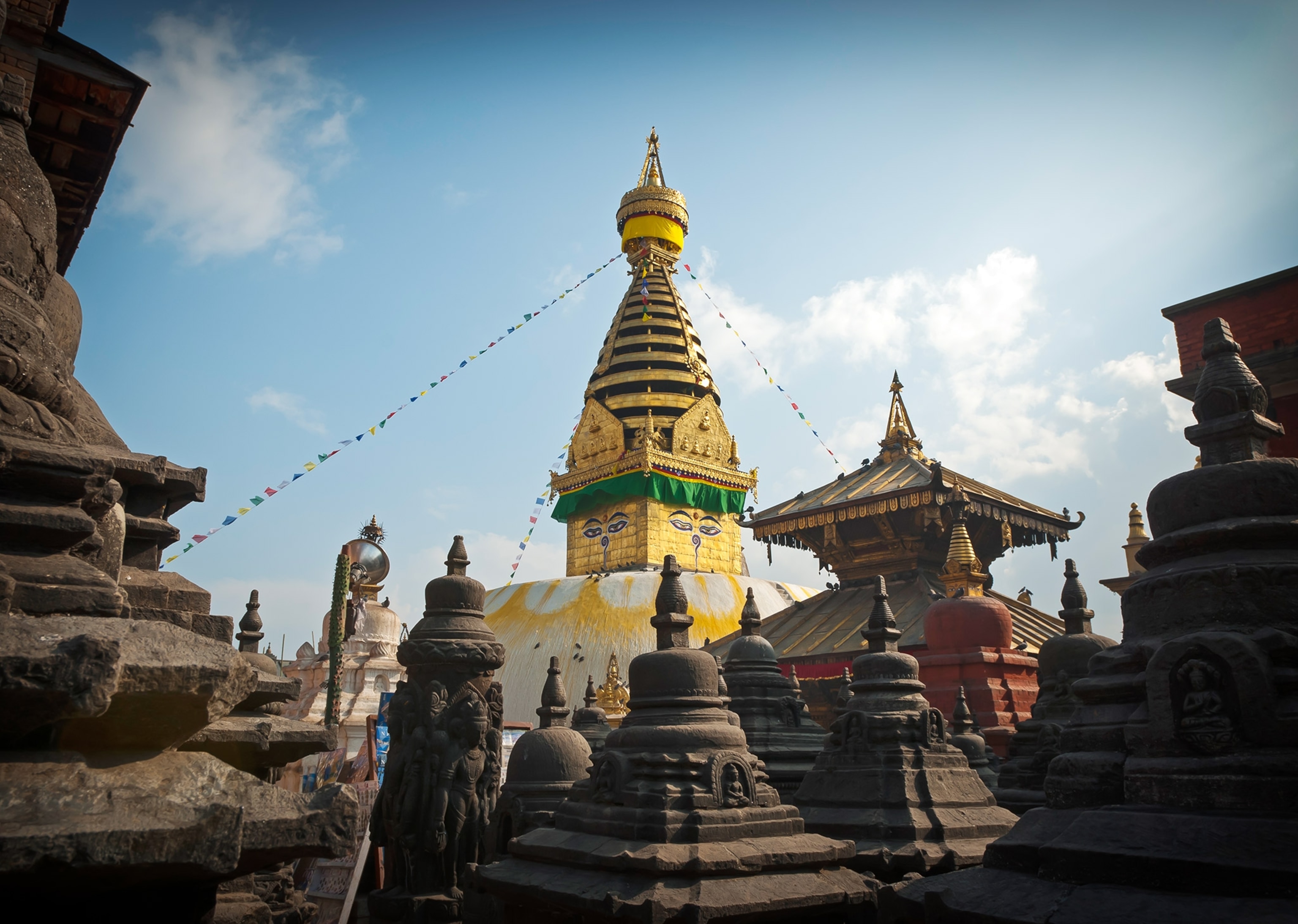
This fifth-century temple complex west of Kathmandu features what is perhaps Nepal’s most iconic stupa, with colorful eyes of the Buddha emblazoned on its surface. The stupa has survived, yet the 17th-century Pratapur Temple adjacent to the stupa, which was heavily damaged by lightning in 2011 and recently restored, appears to have collapsed.
An aerial view of Swayambhunath posted on Twitter shows the collapsed Pratapur Temple to the left of the stupa:
Follow Kristin Romey on Twitter.

